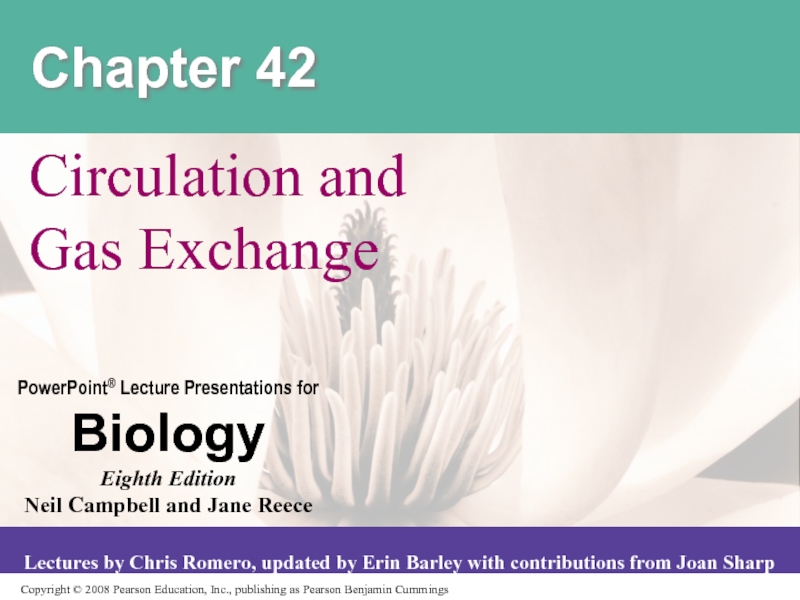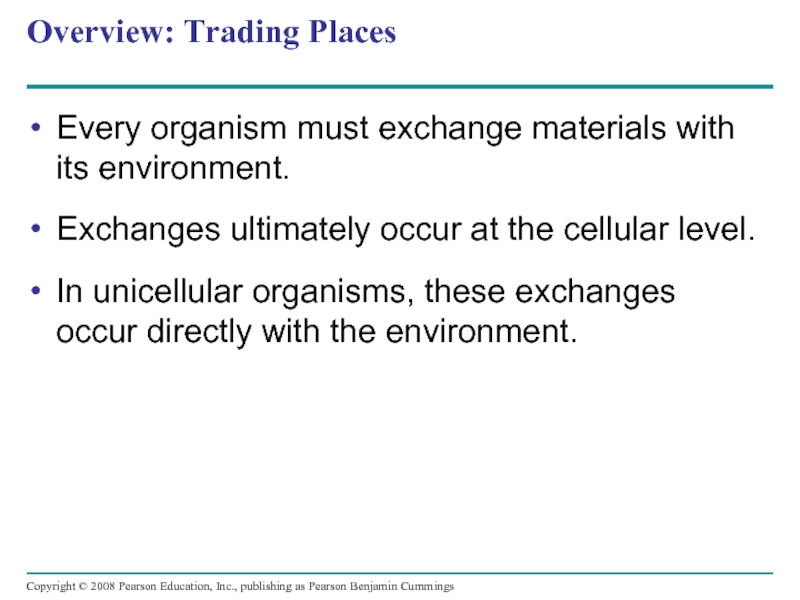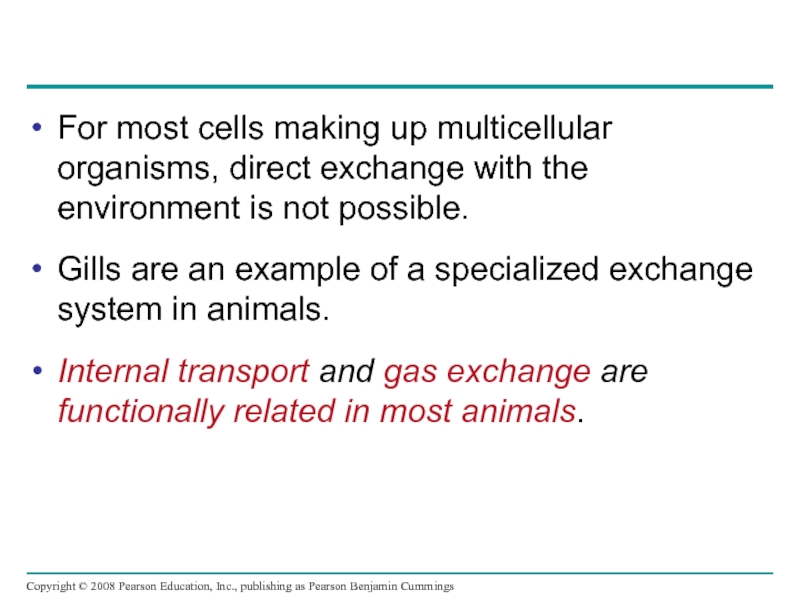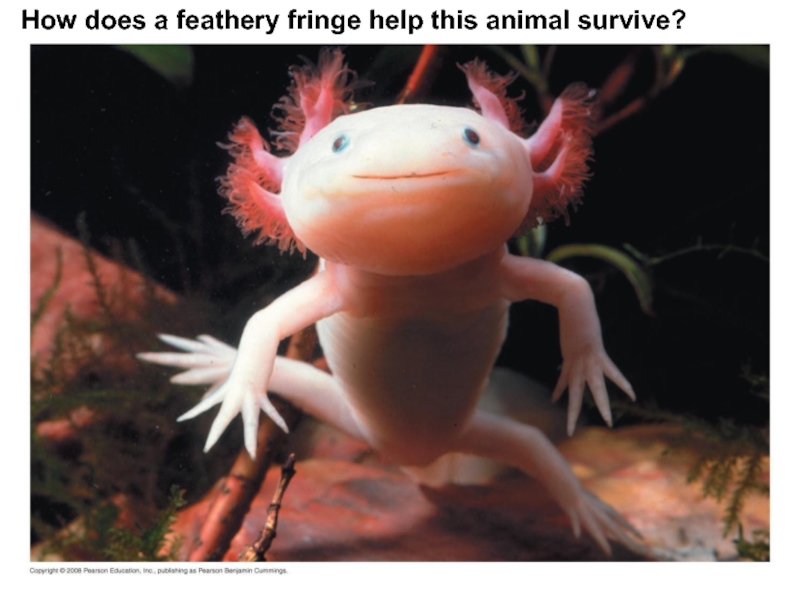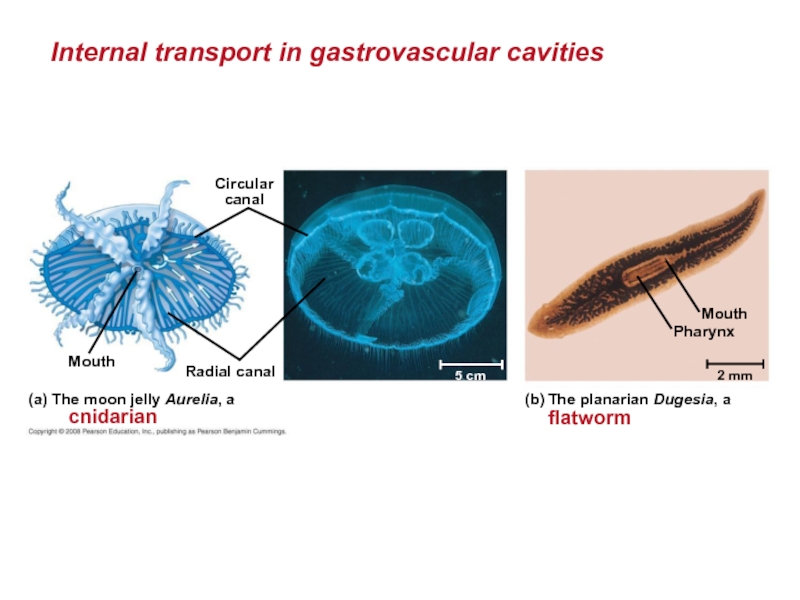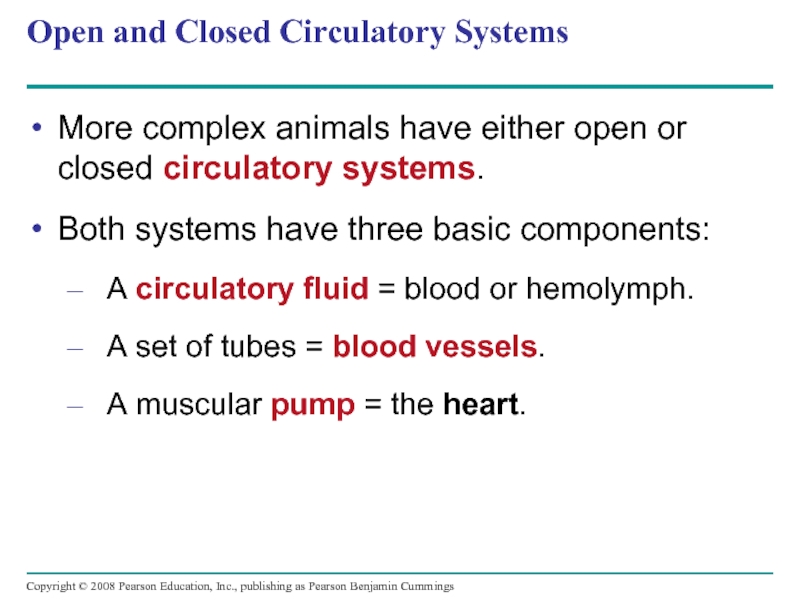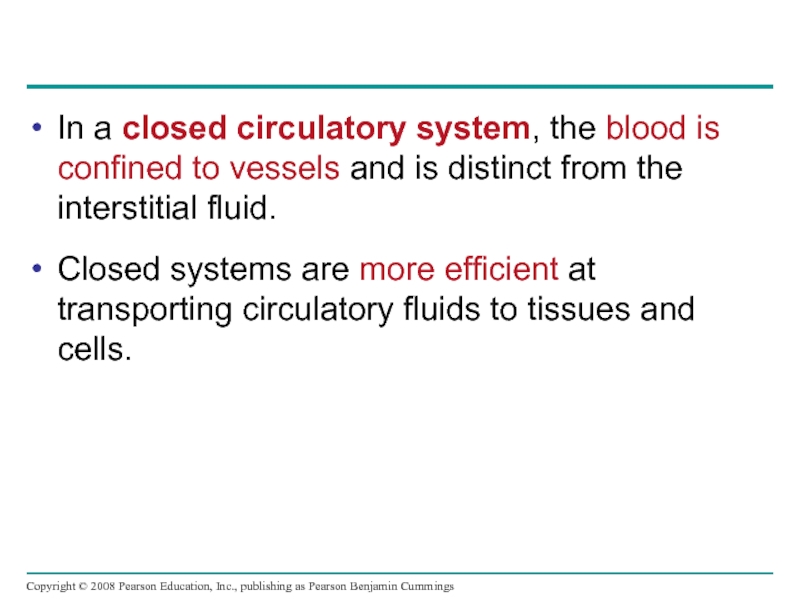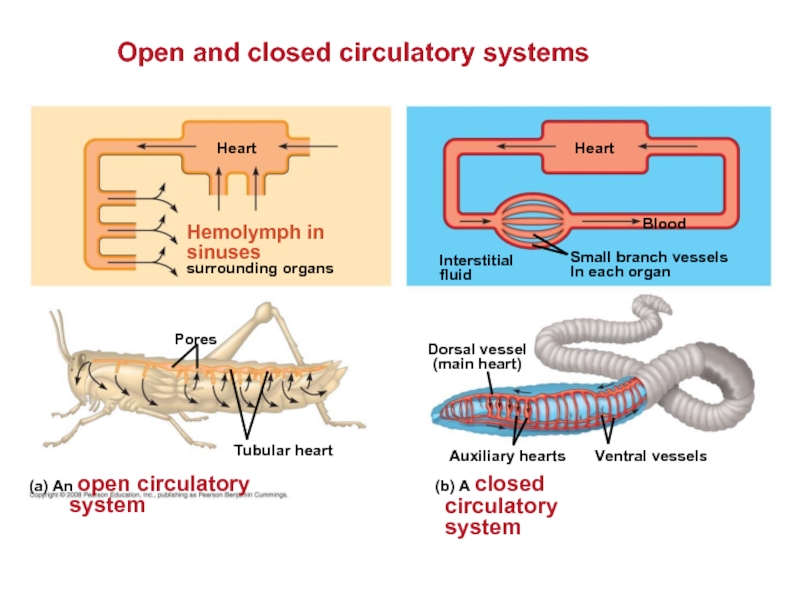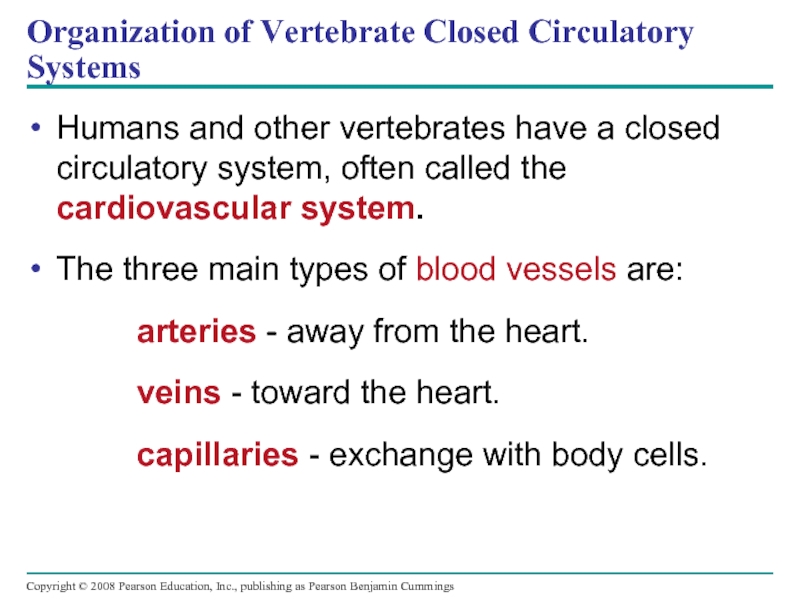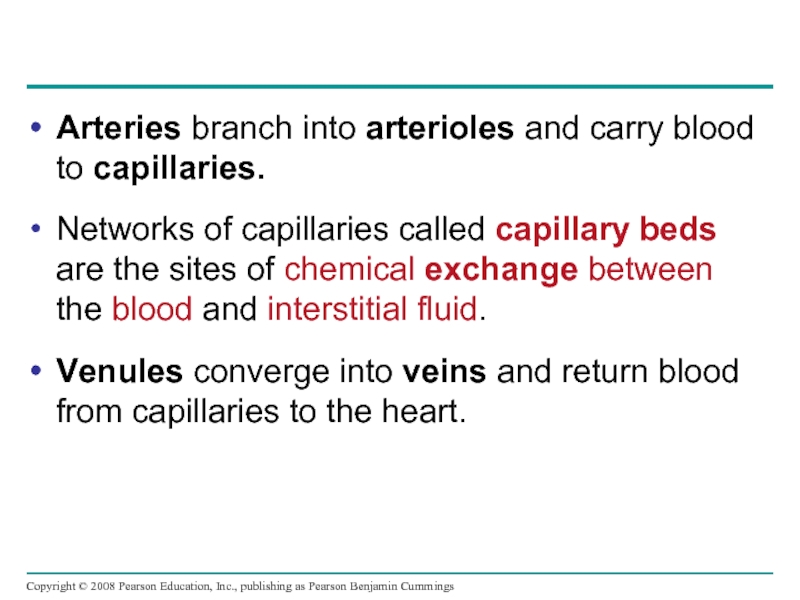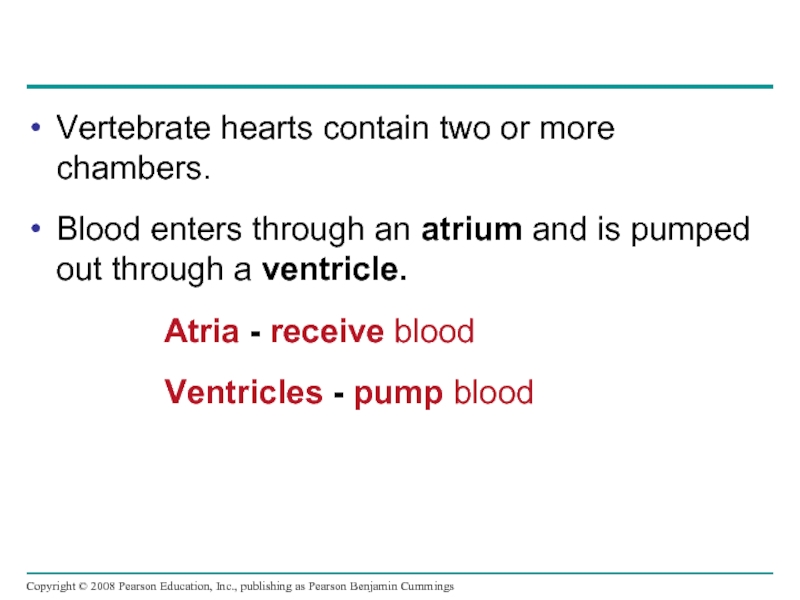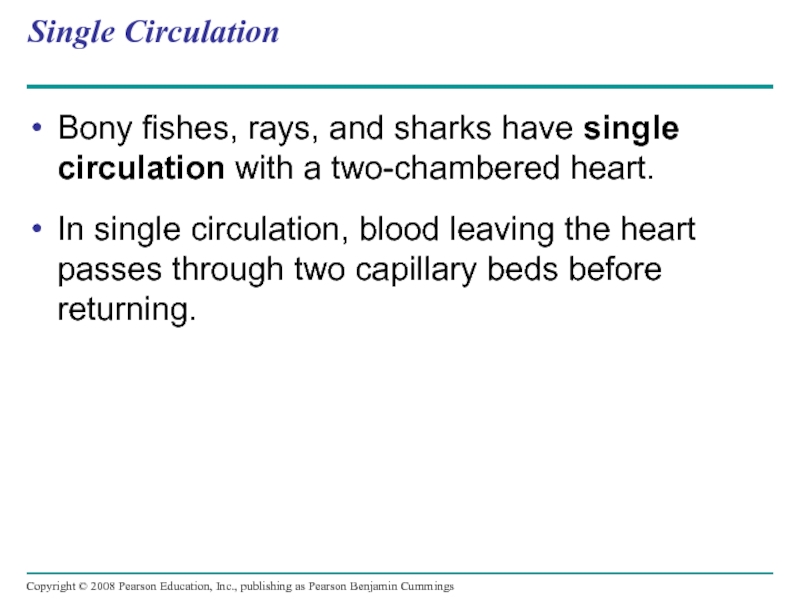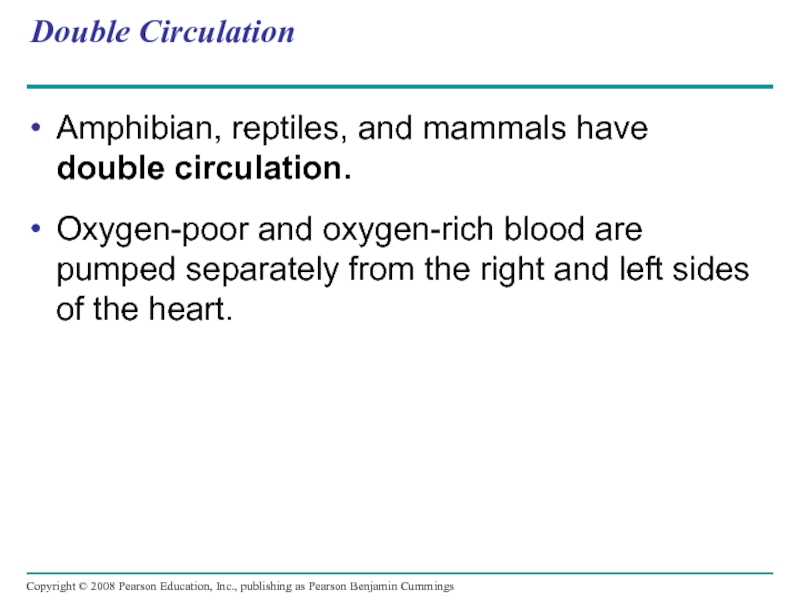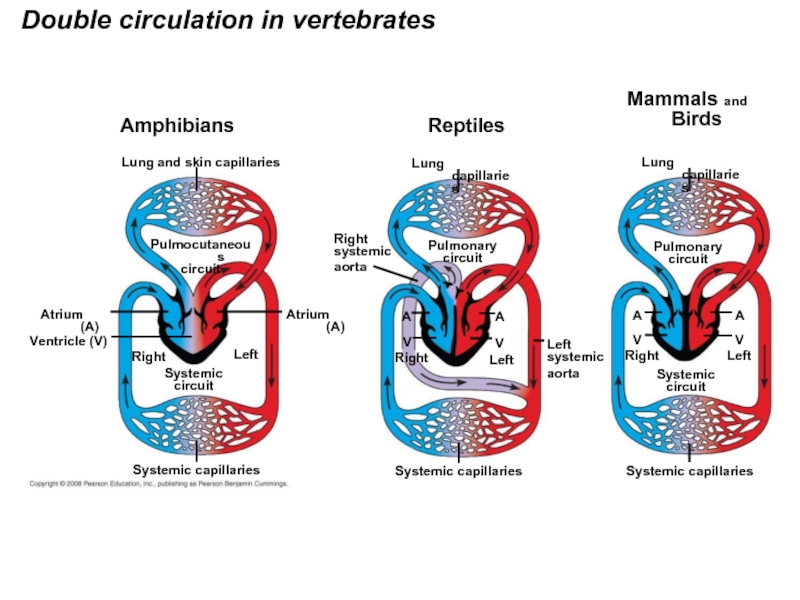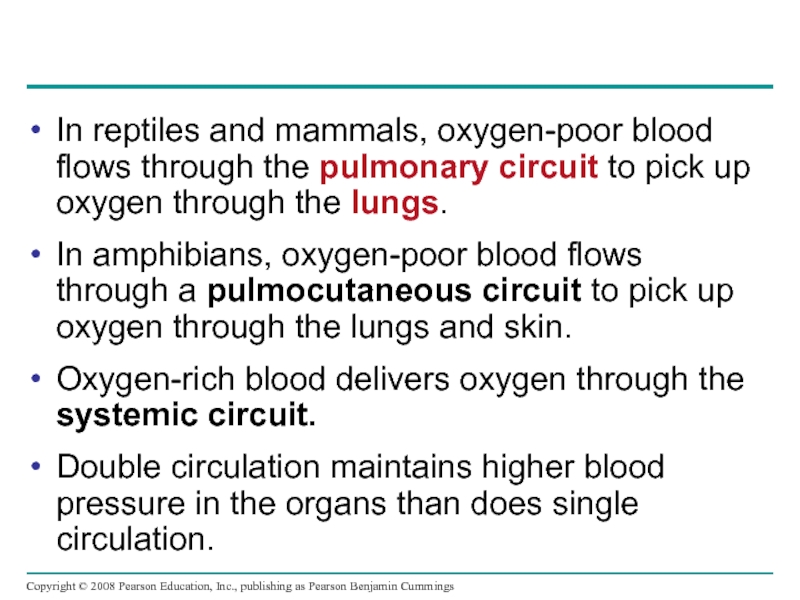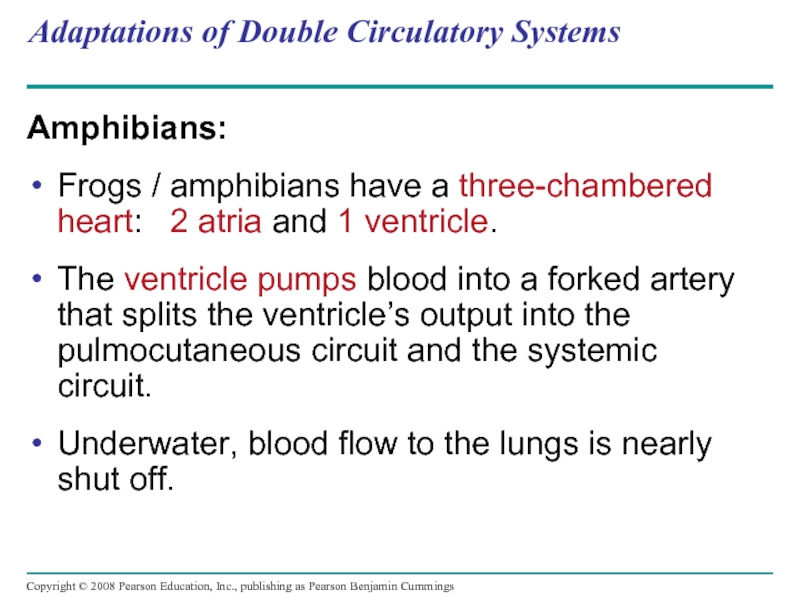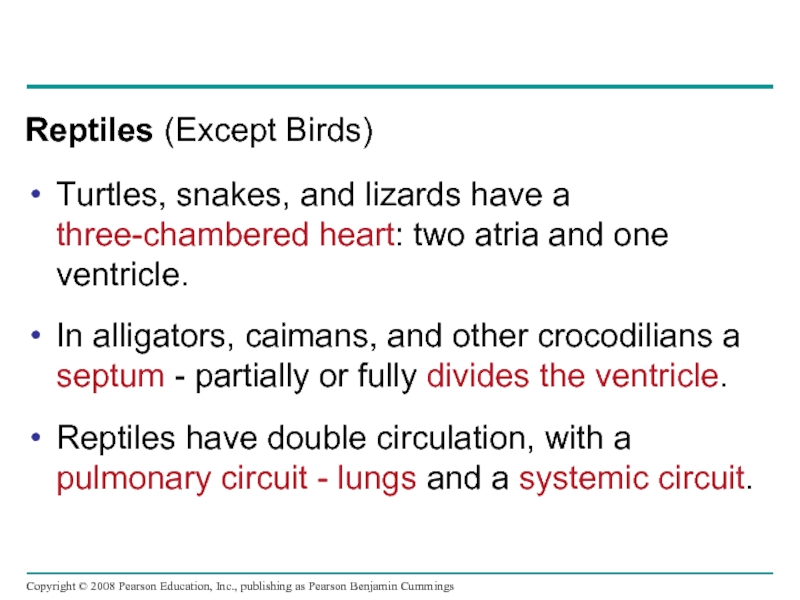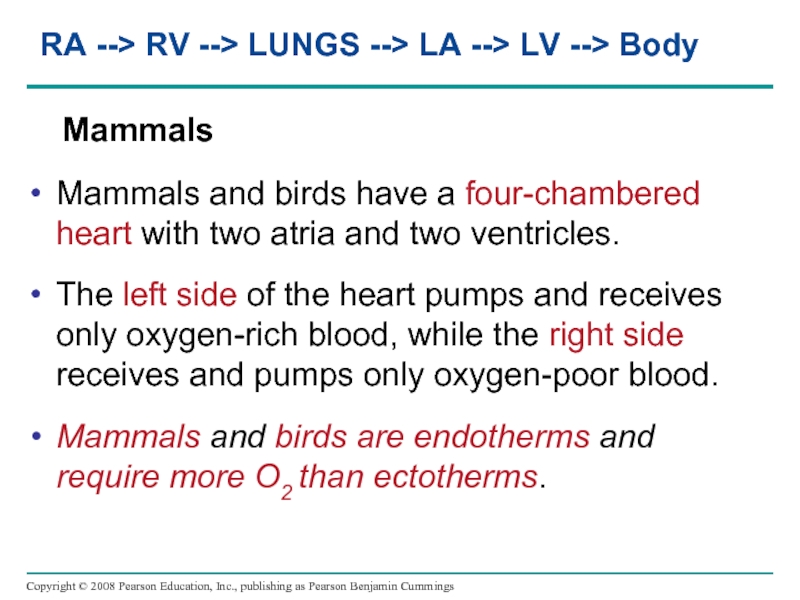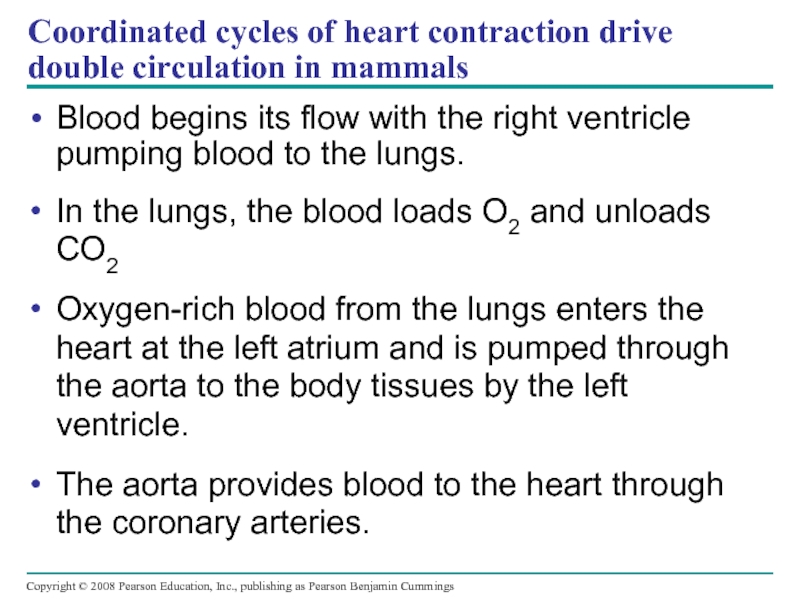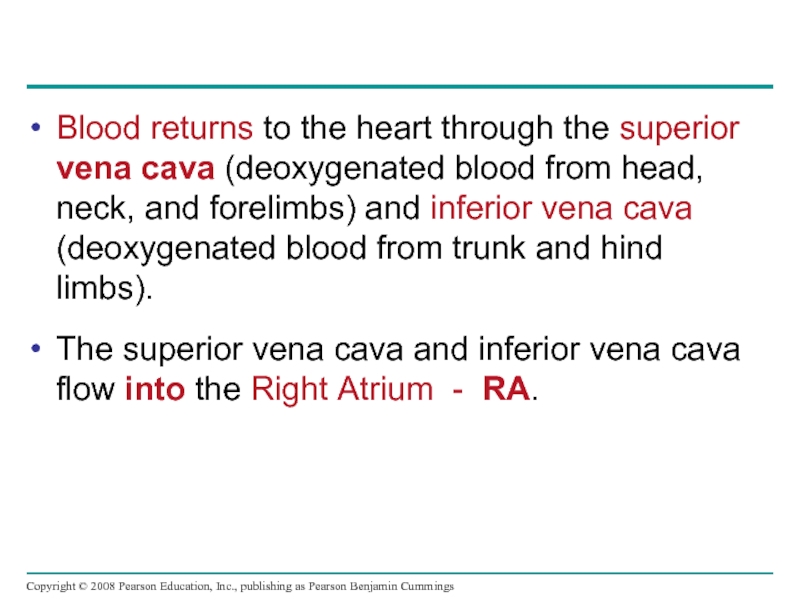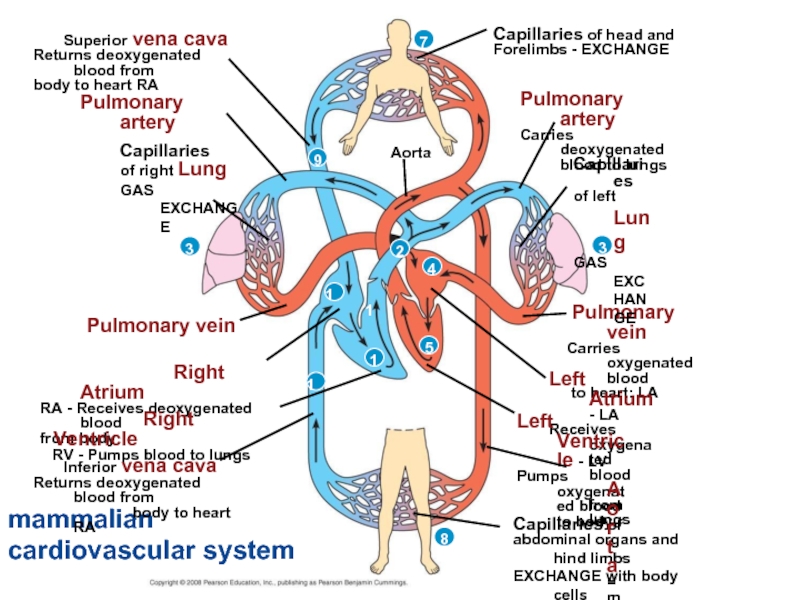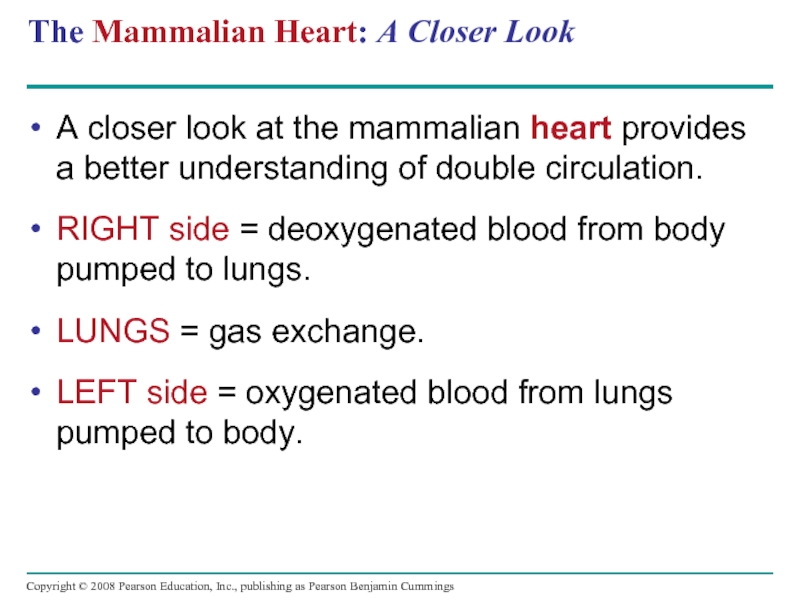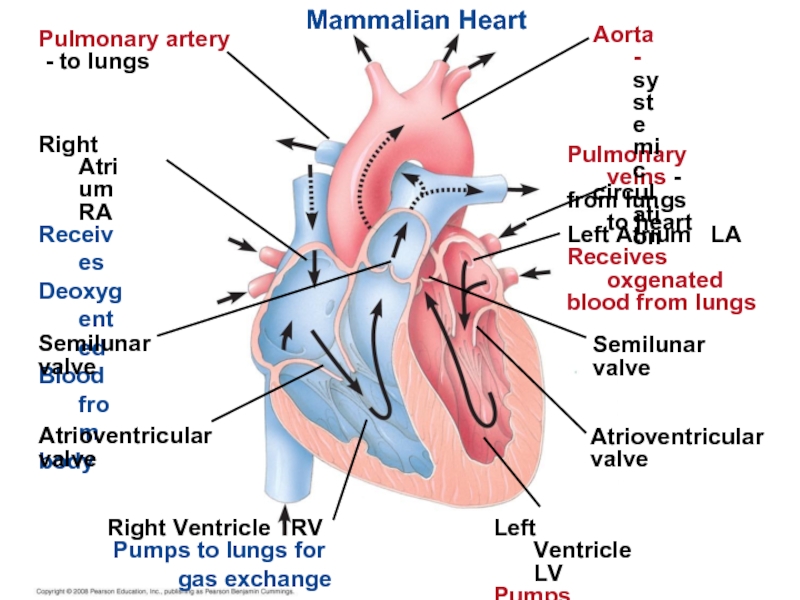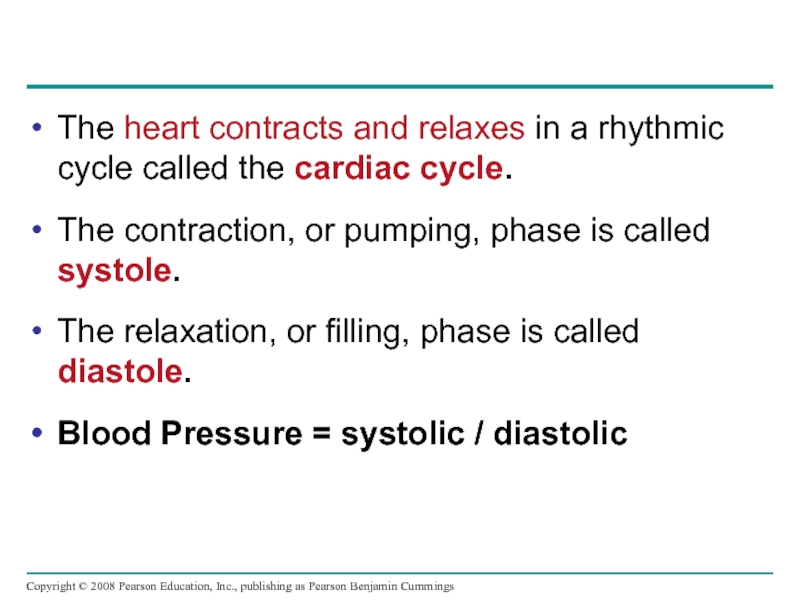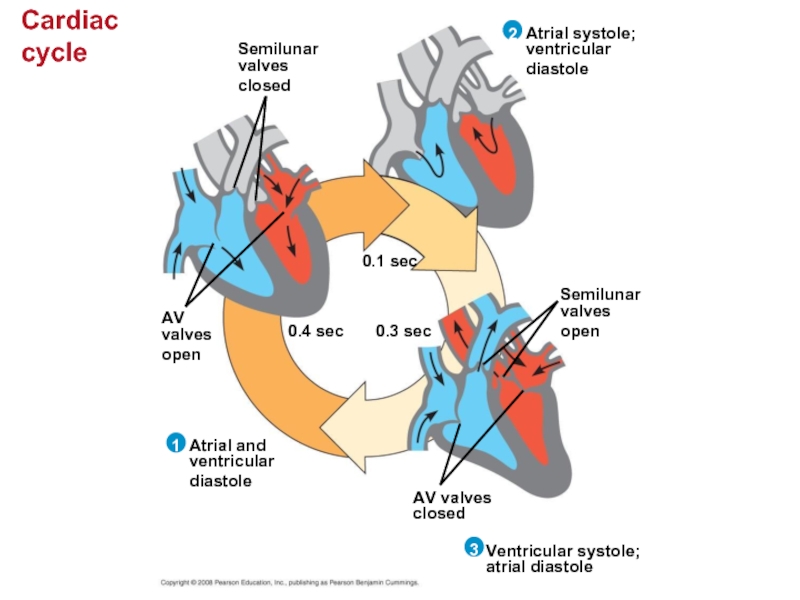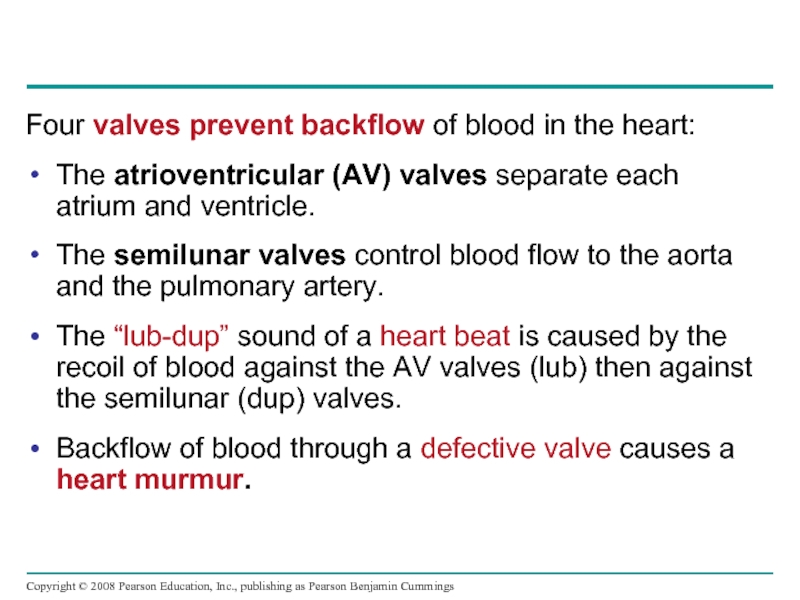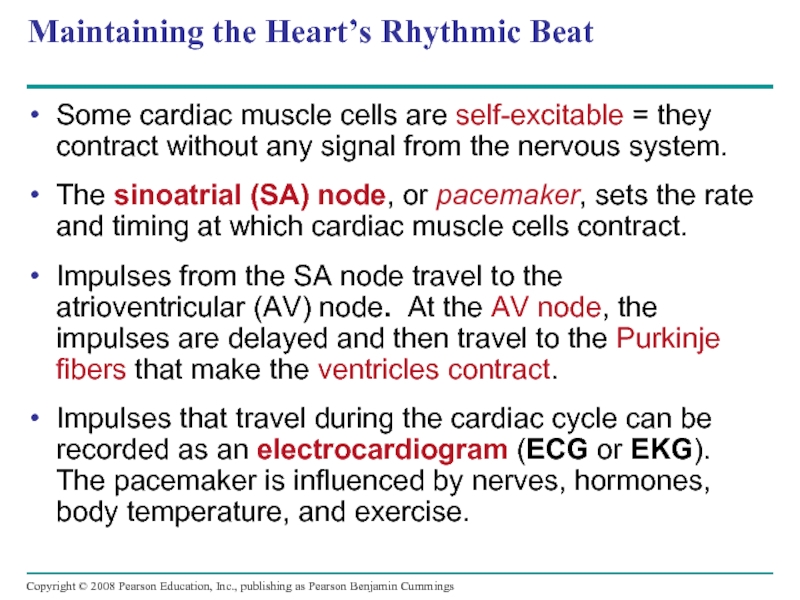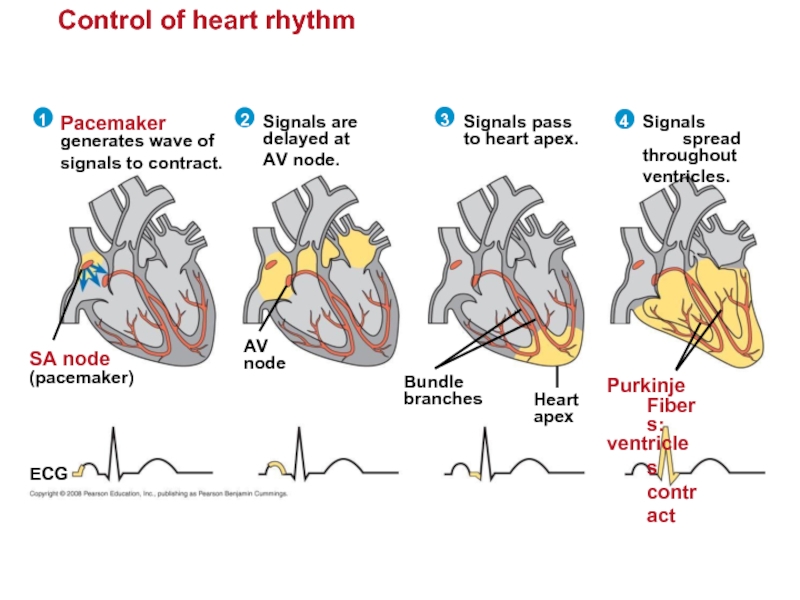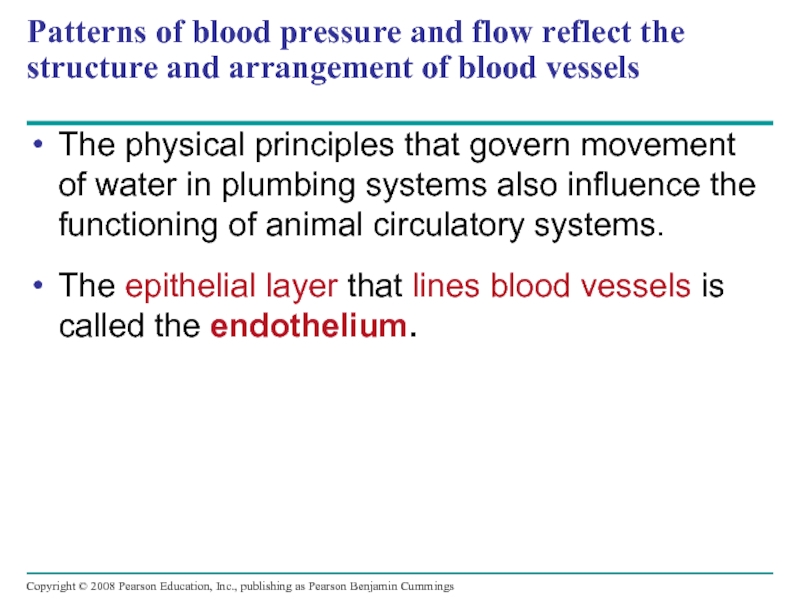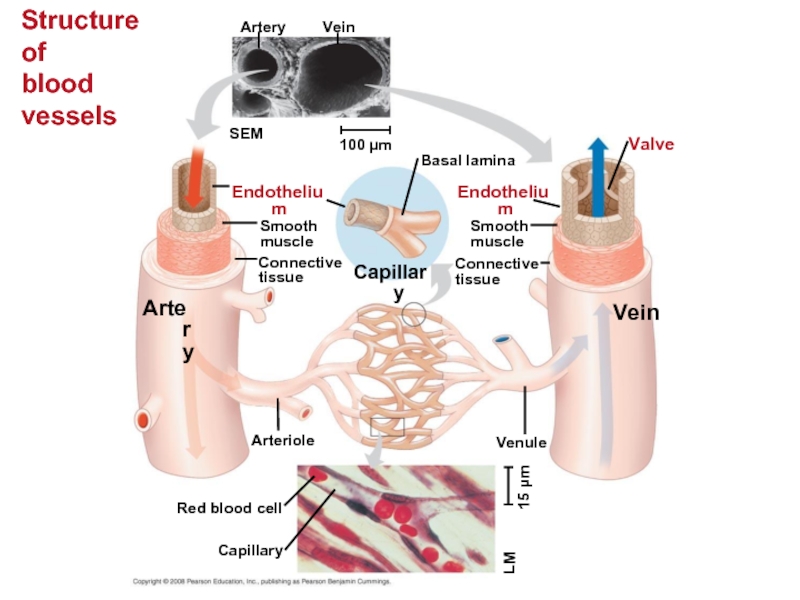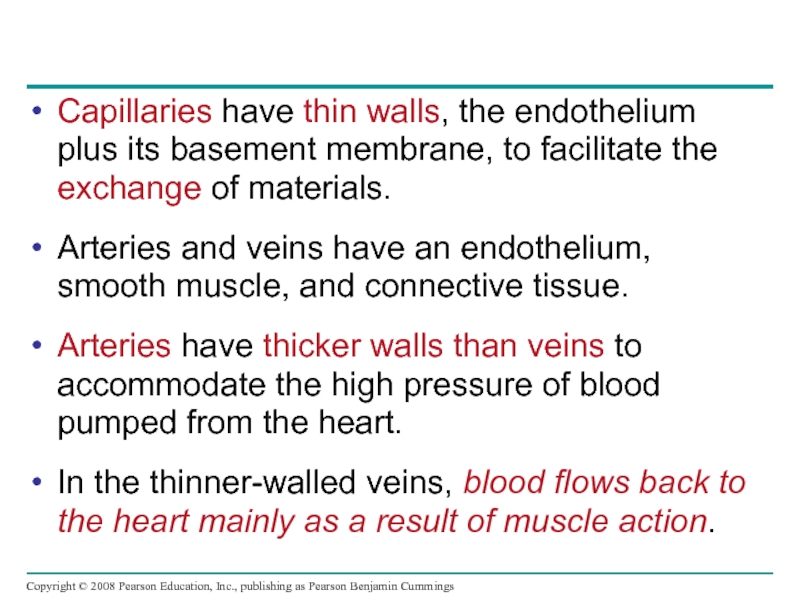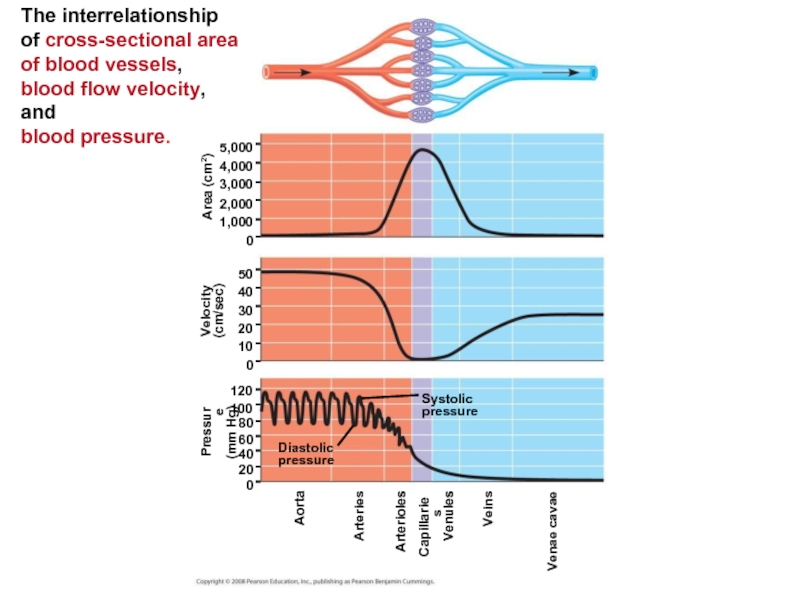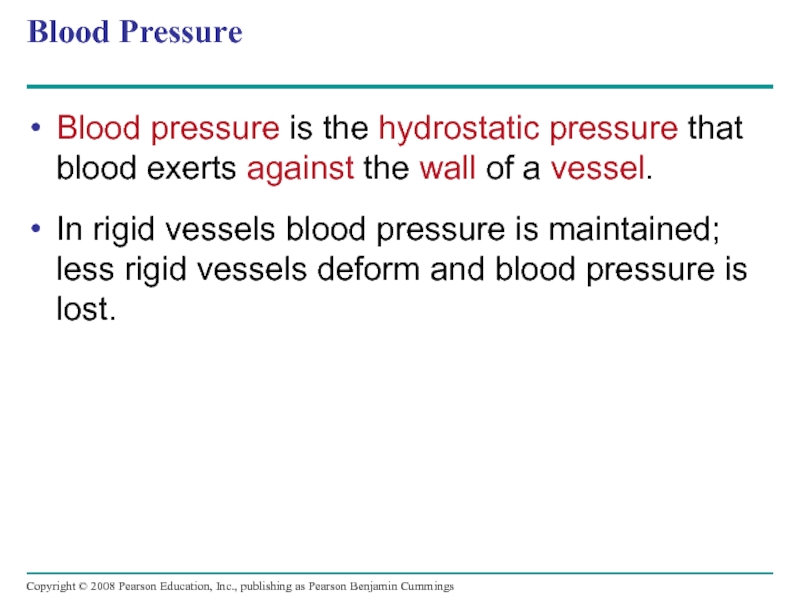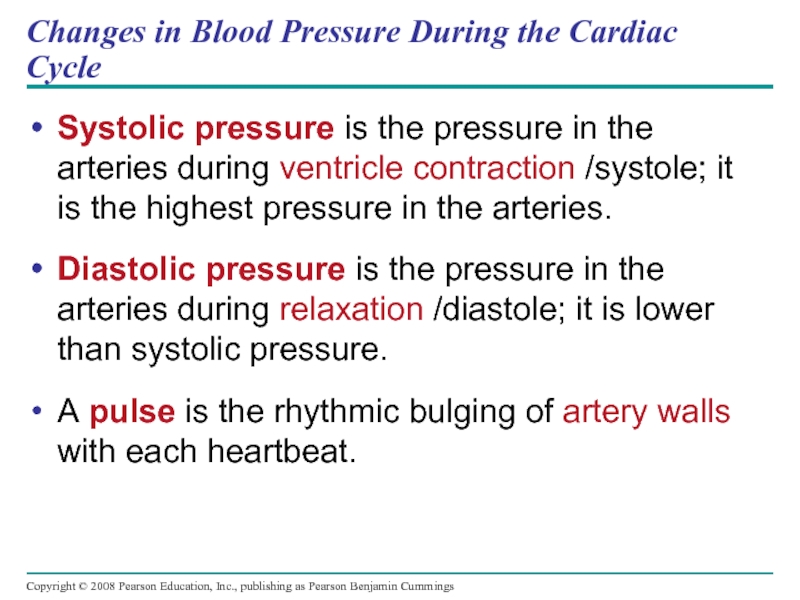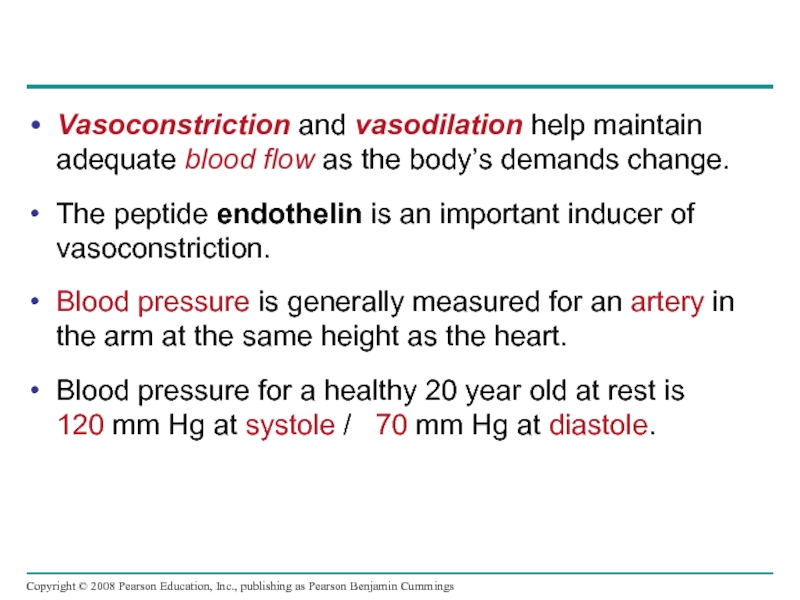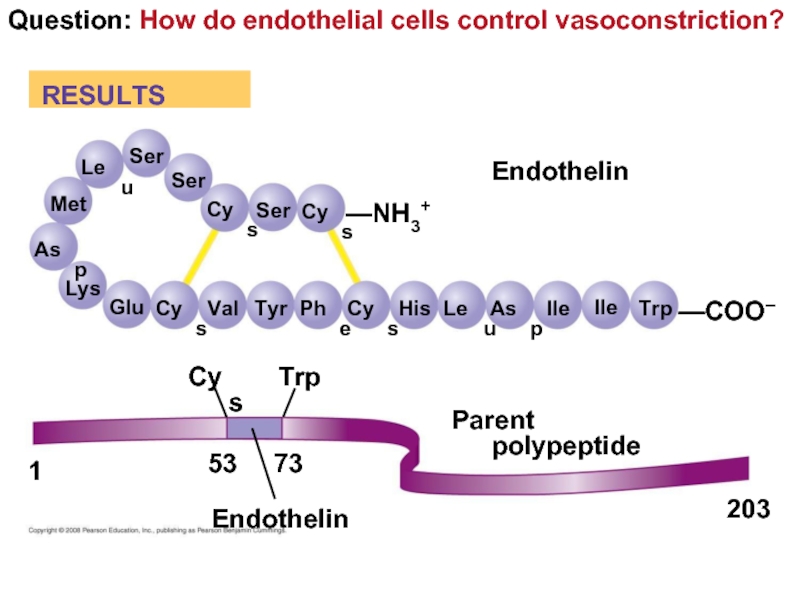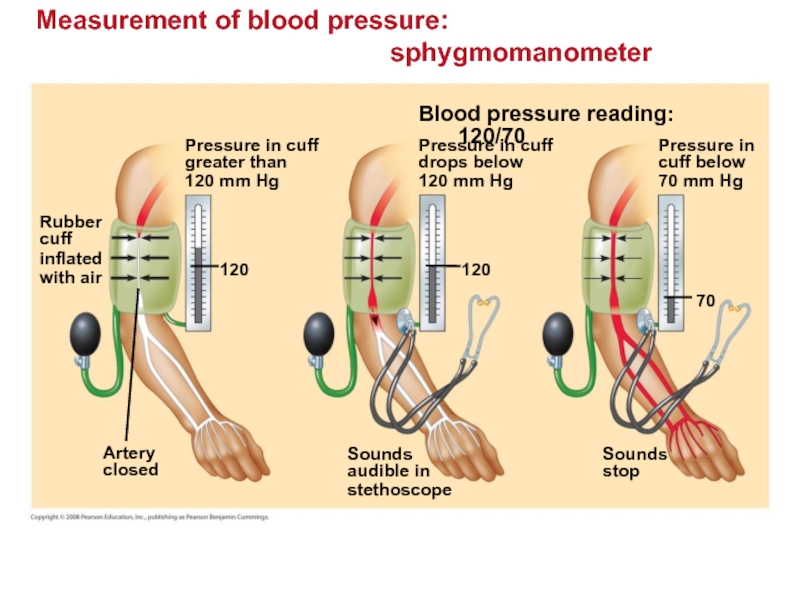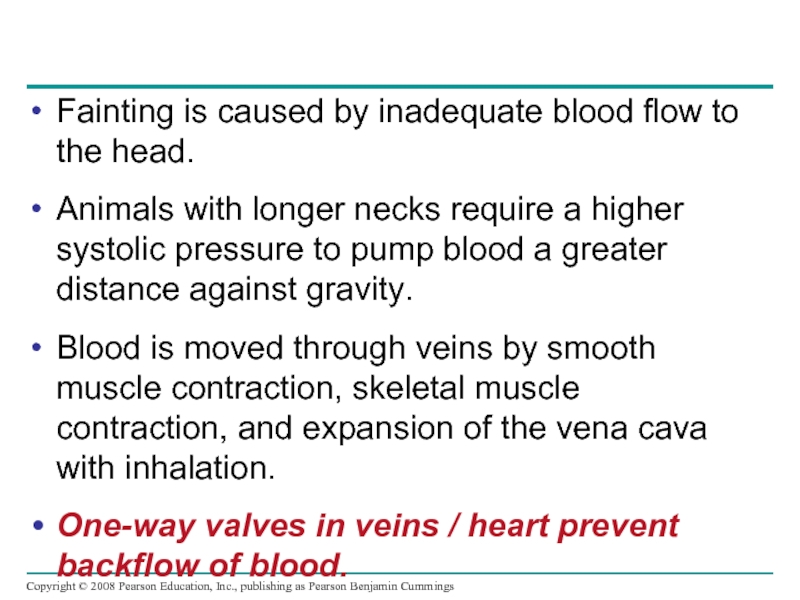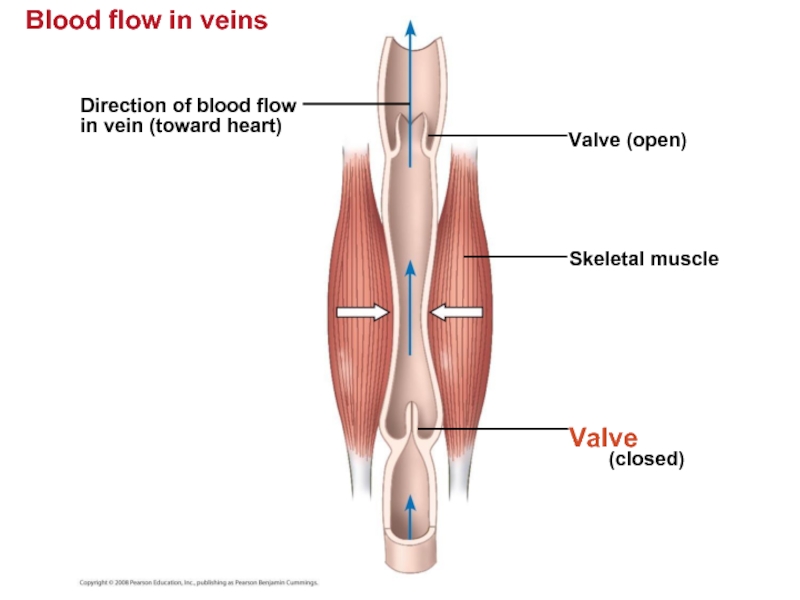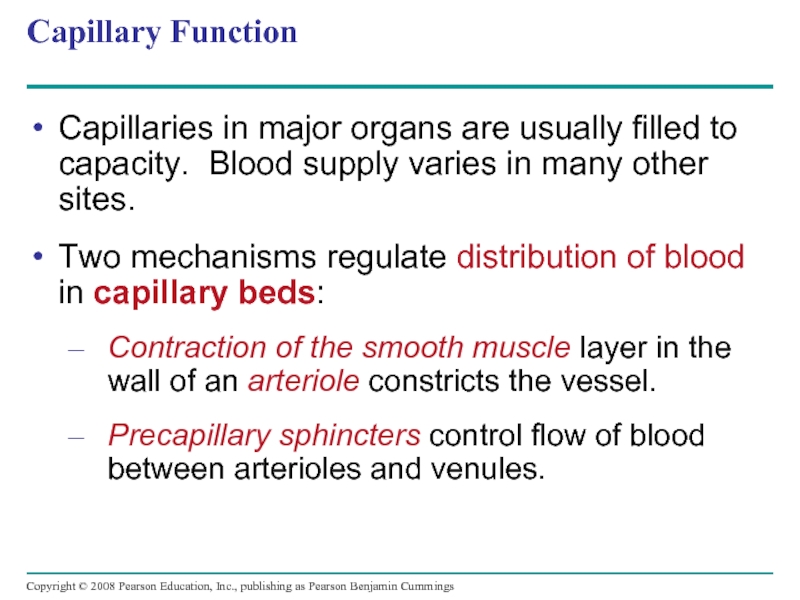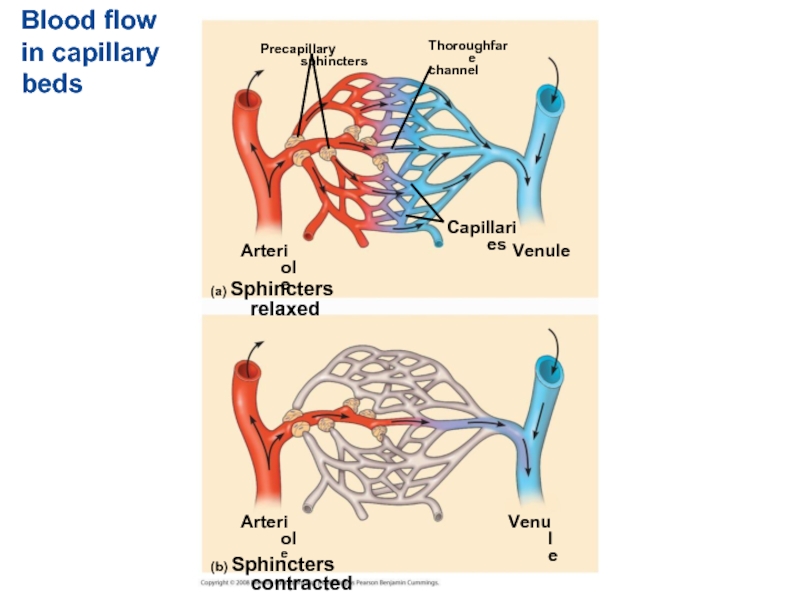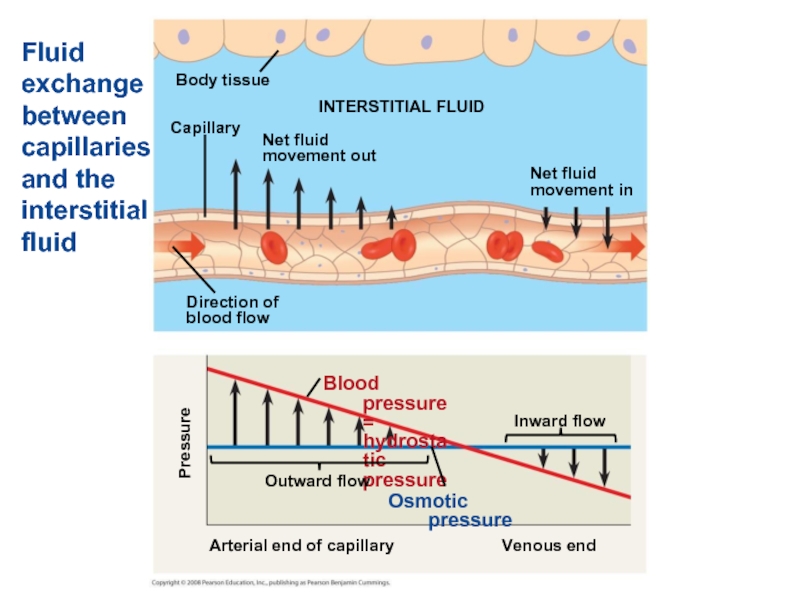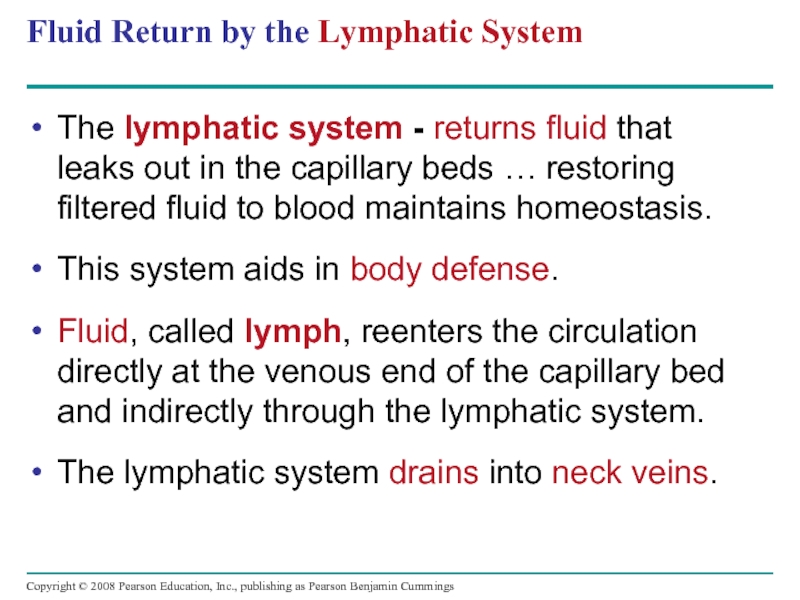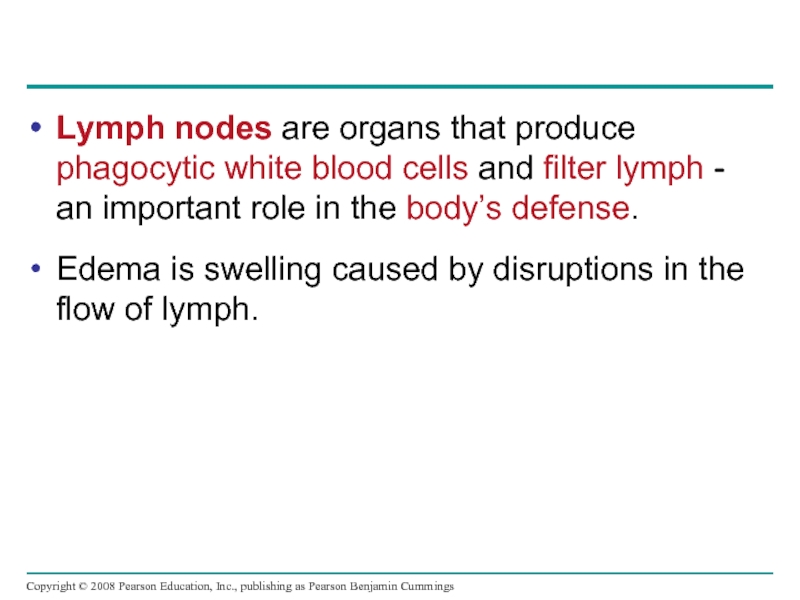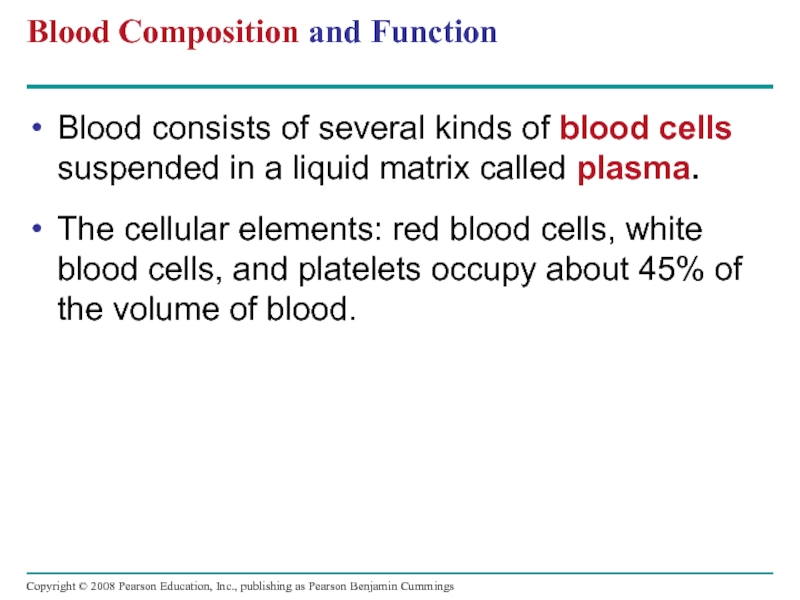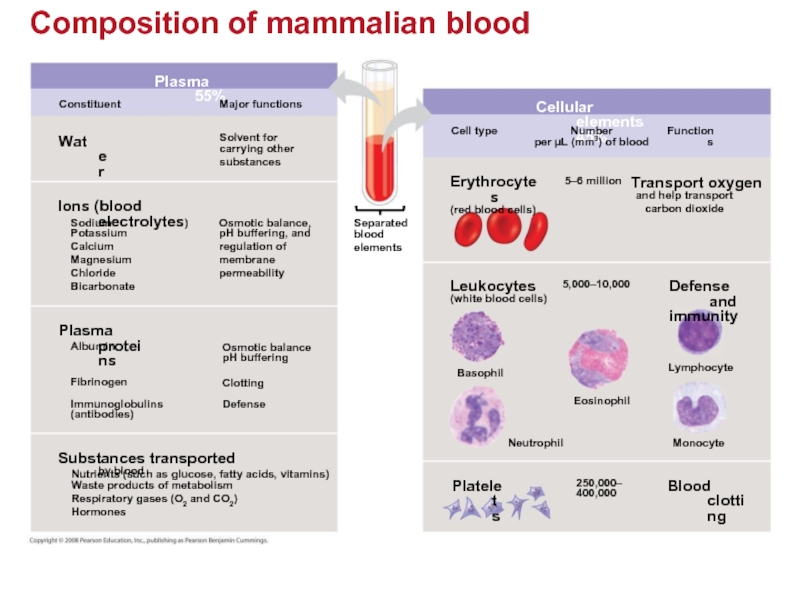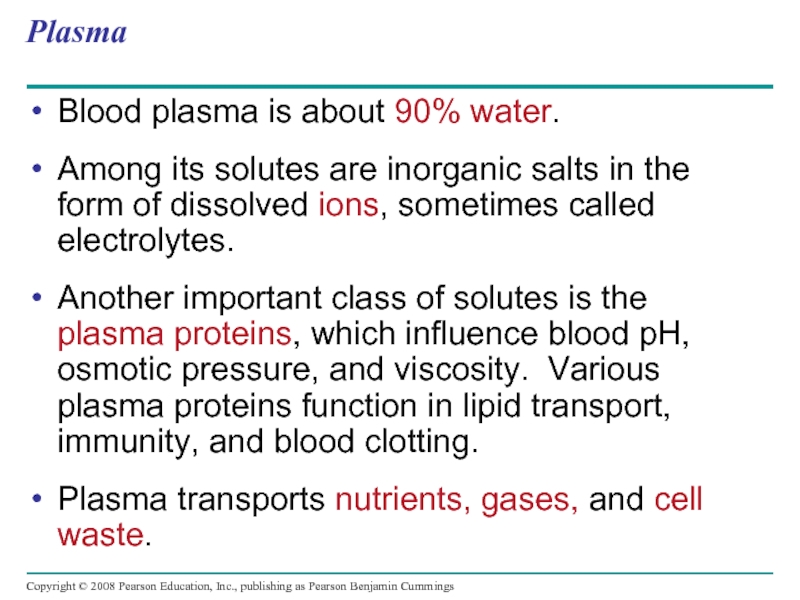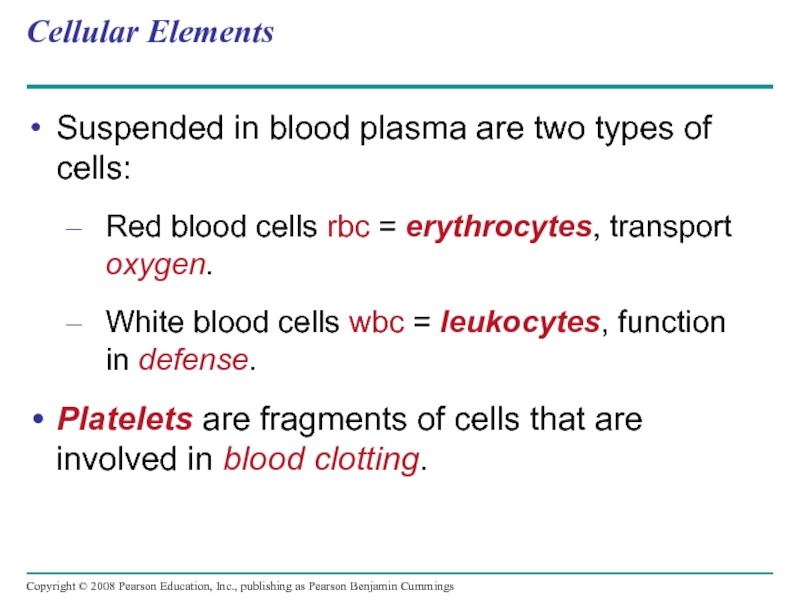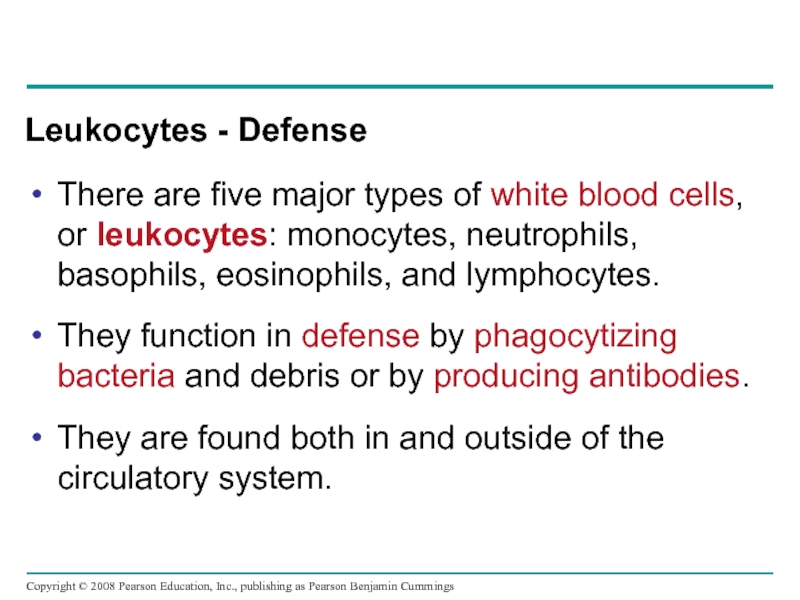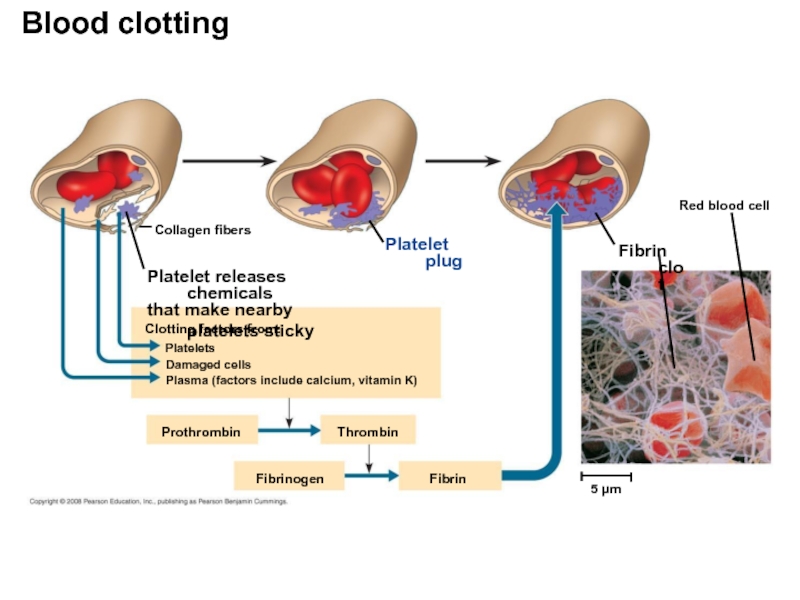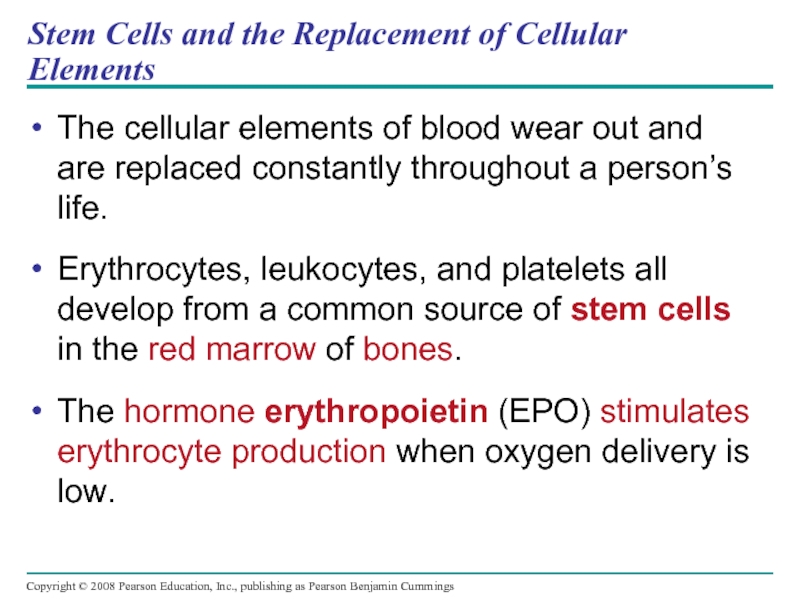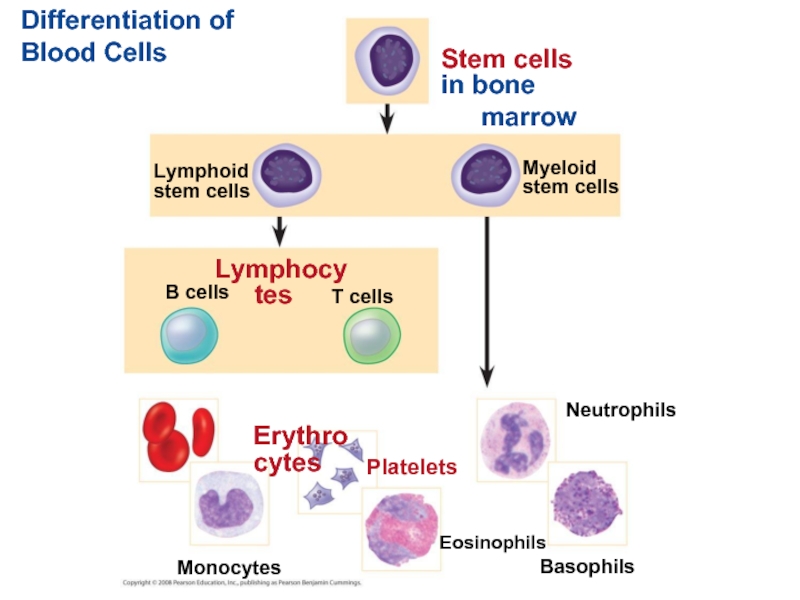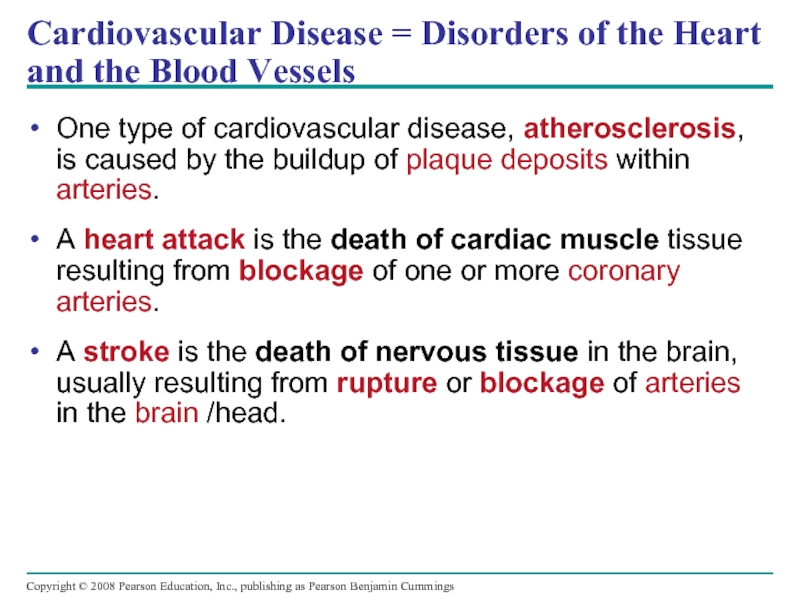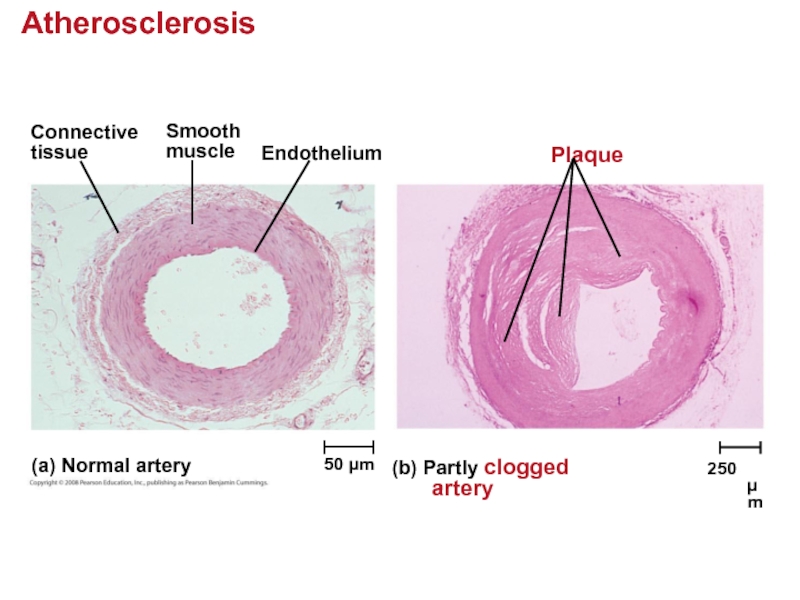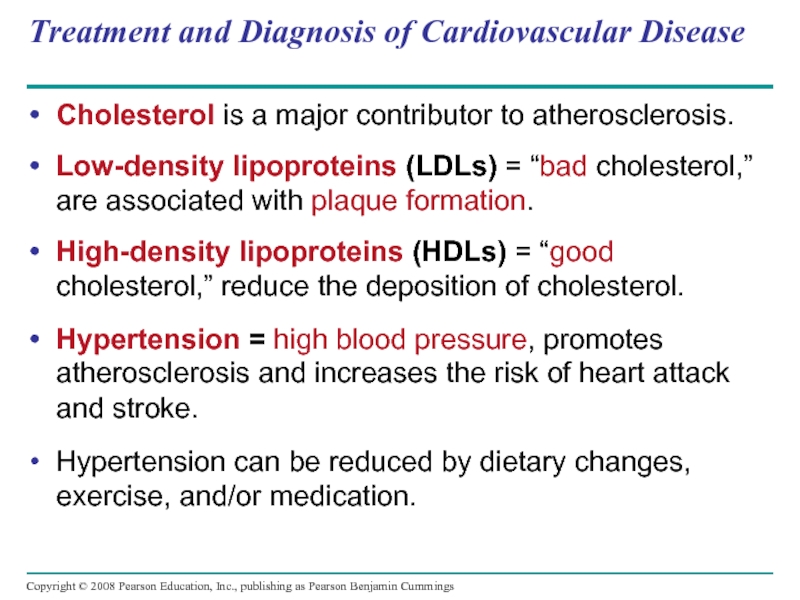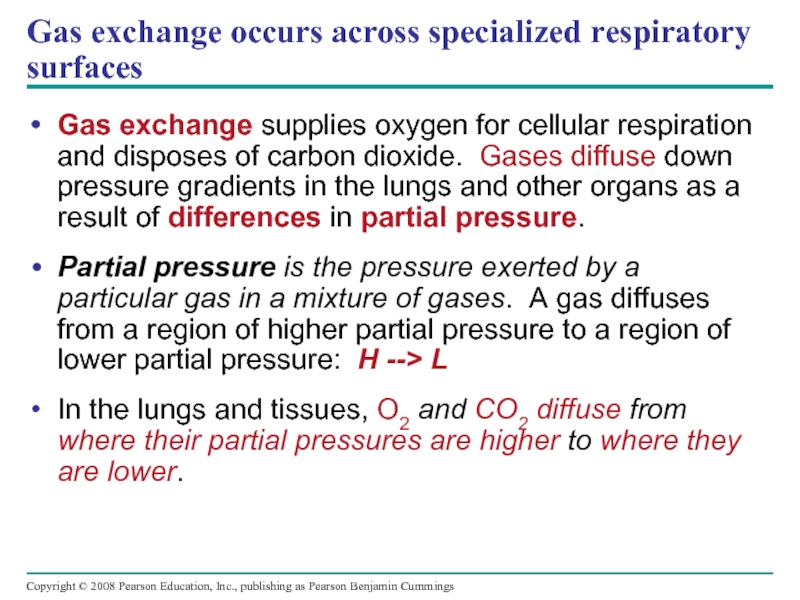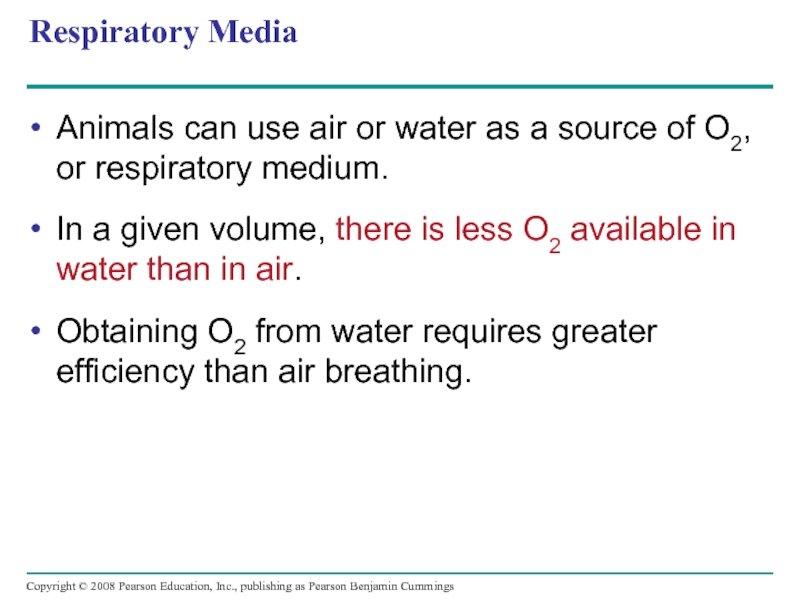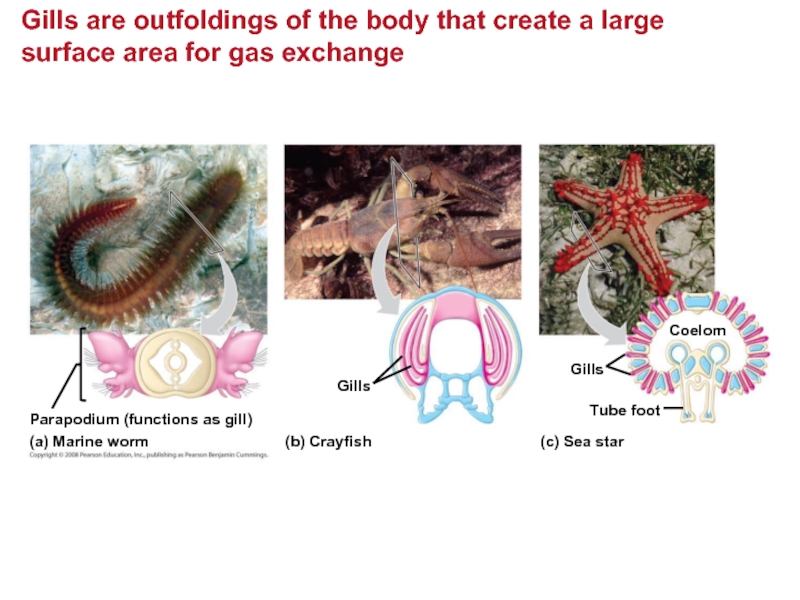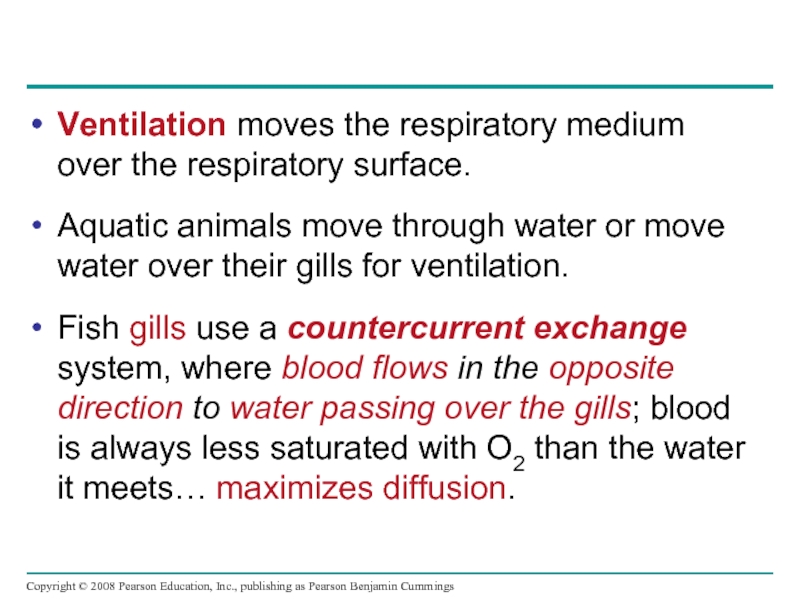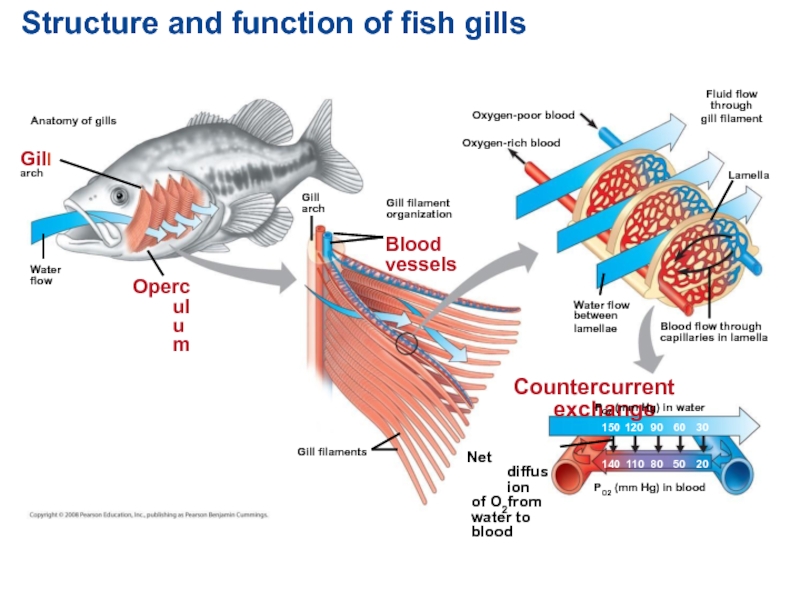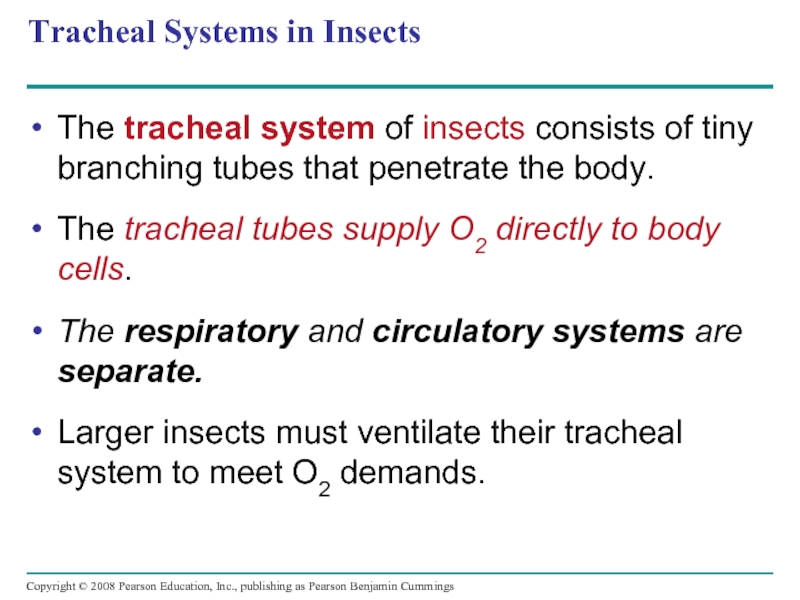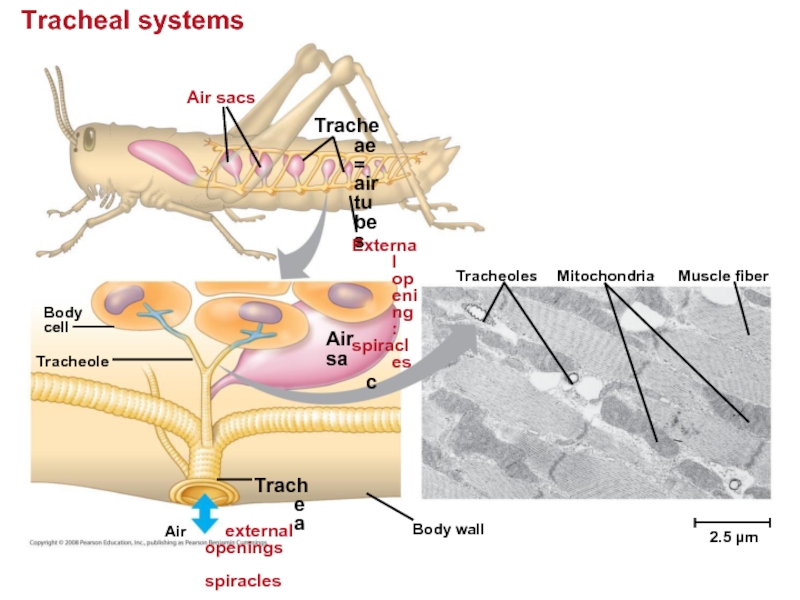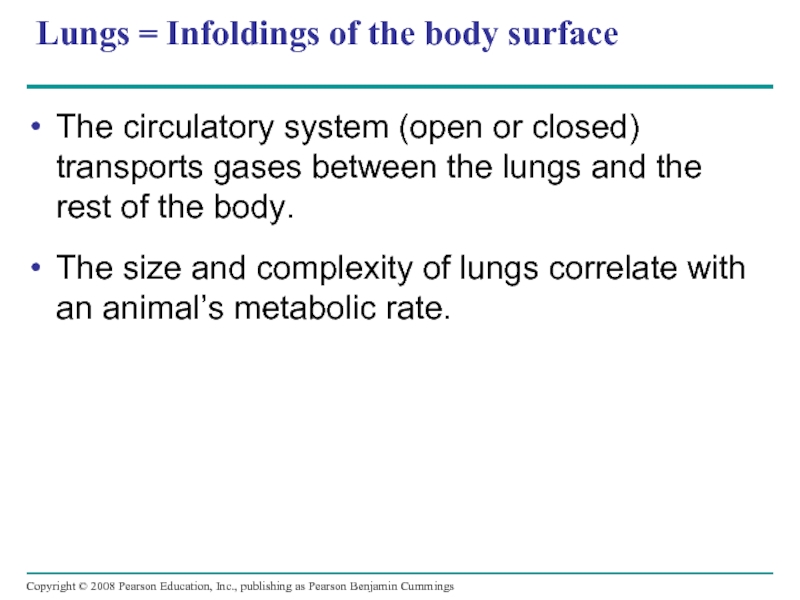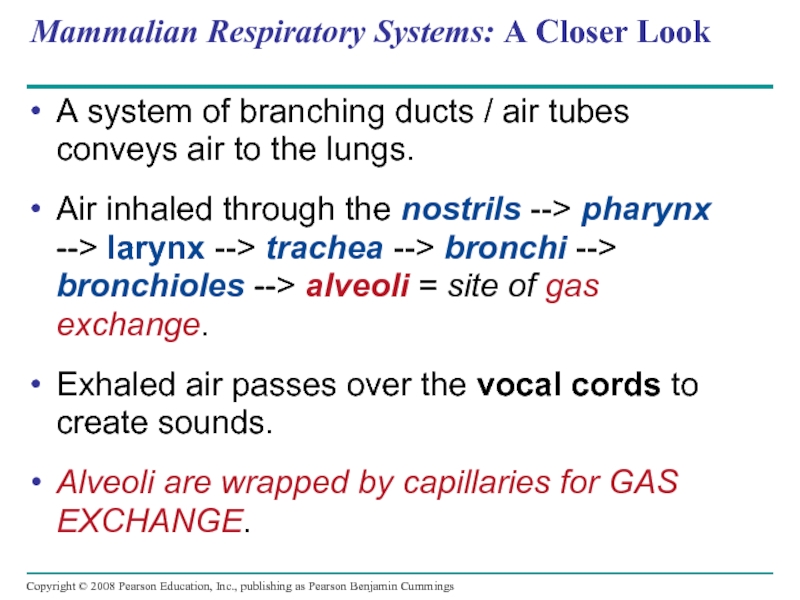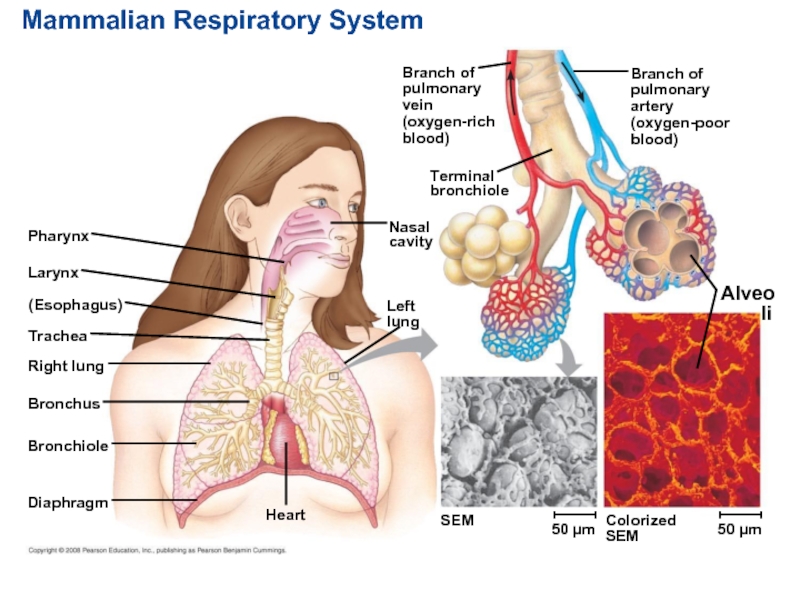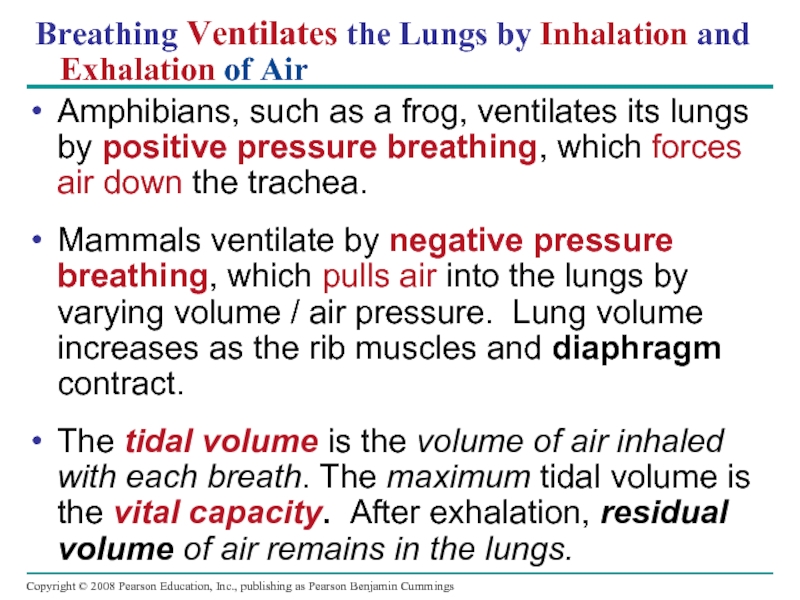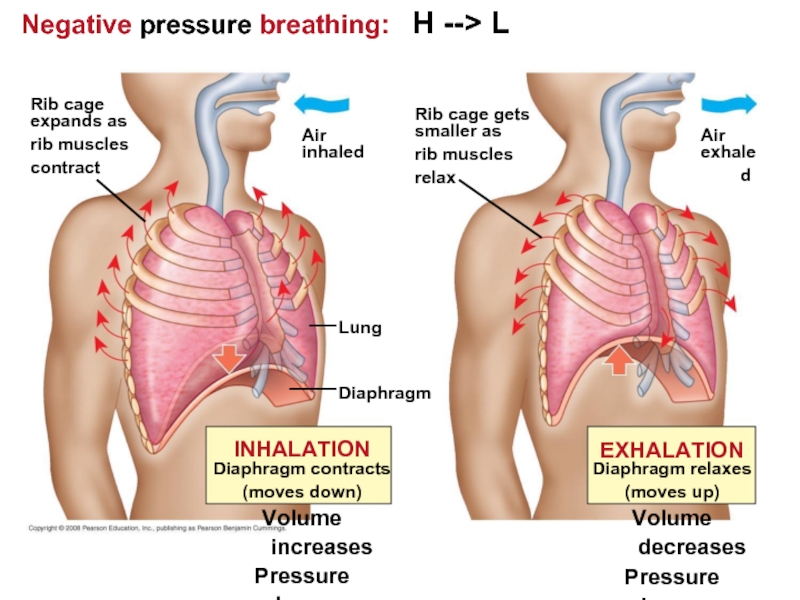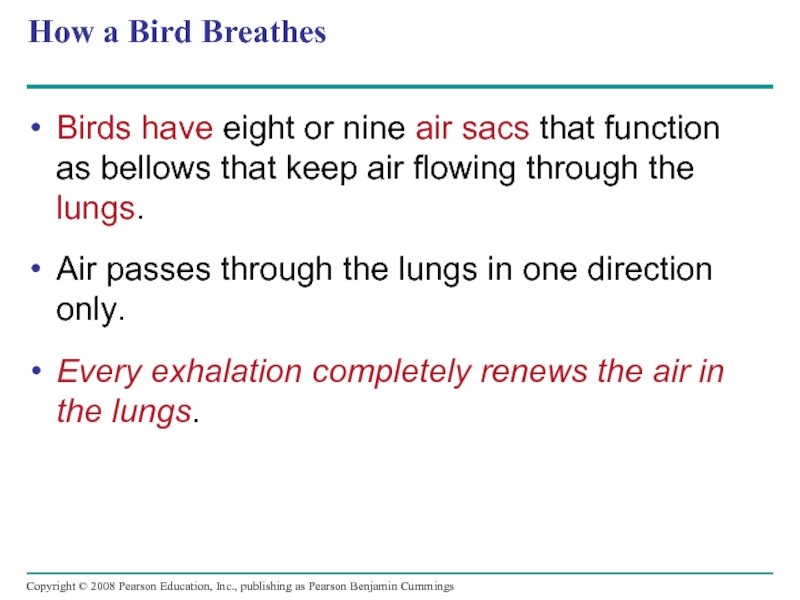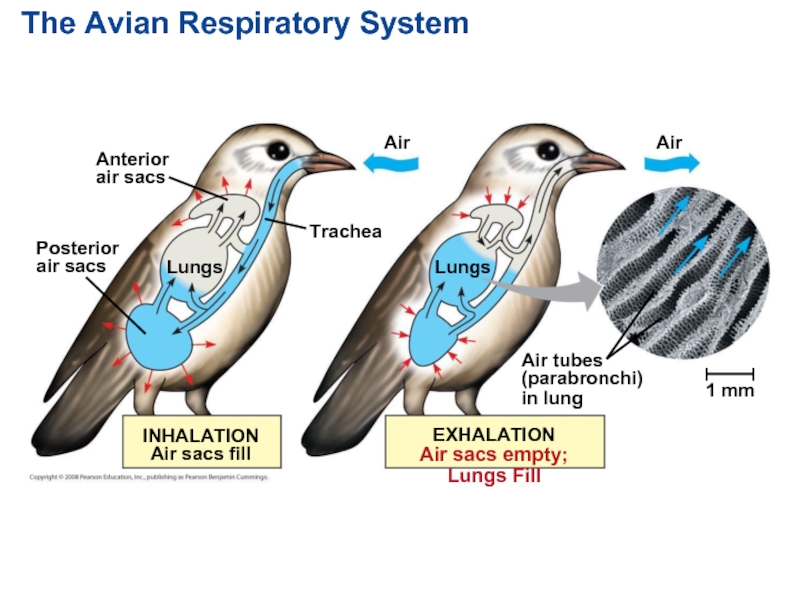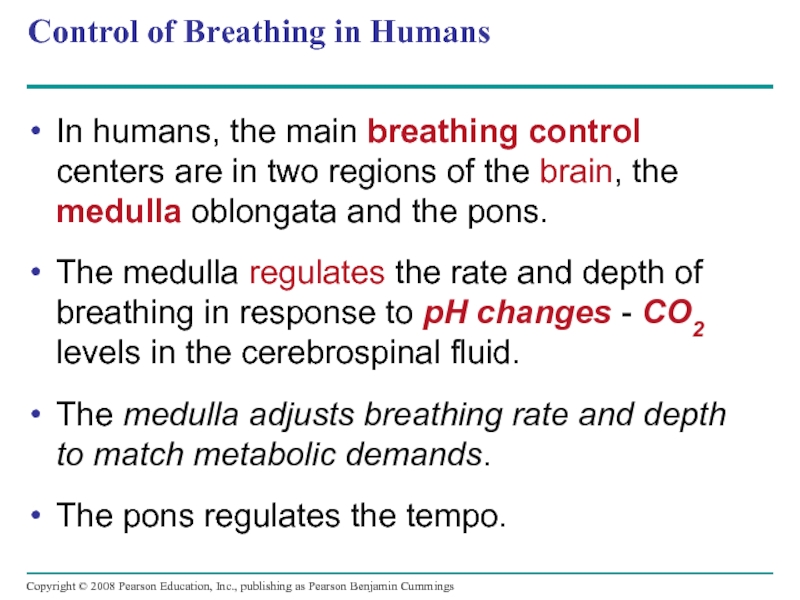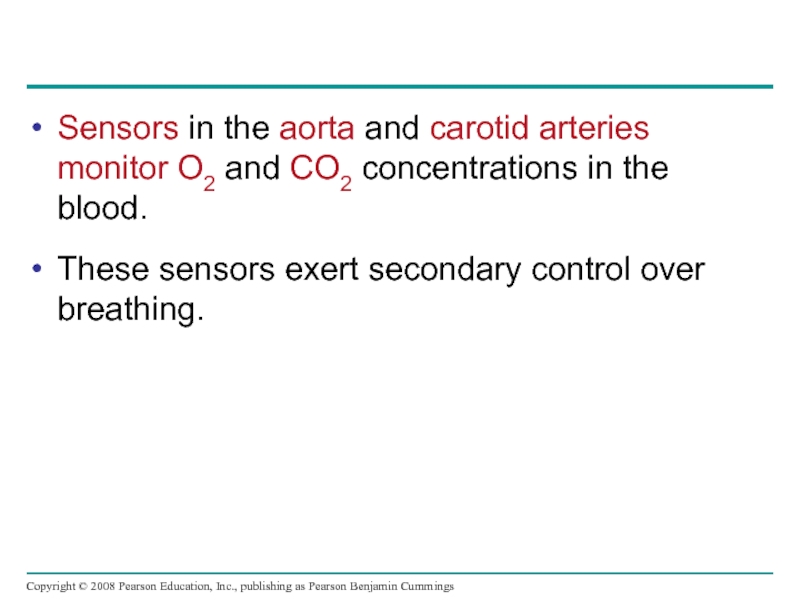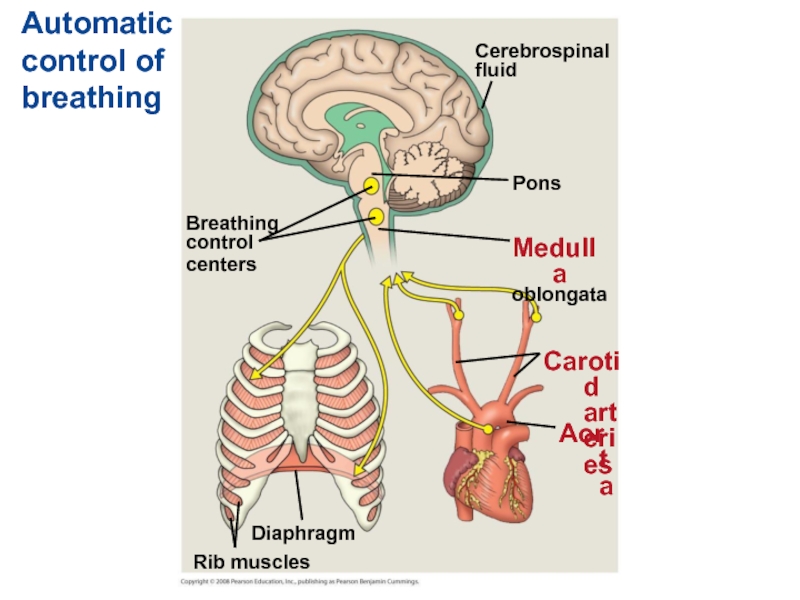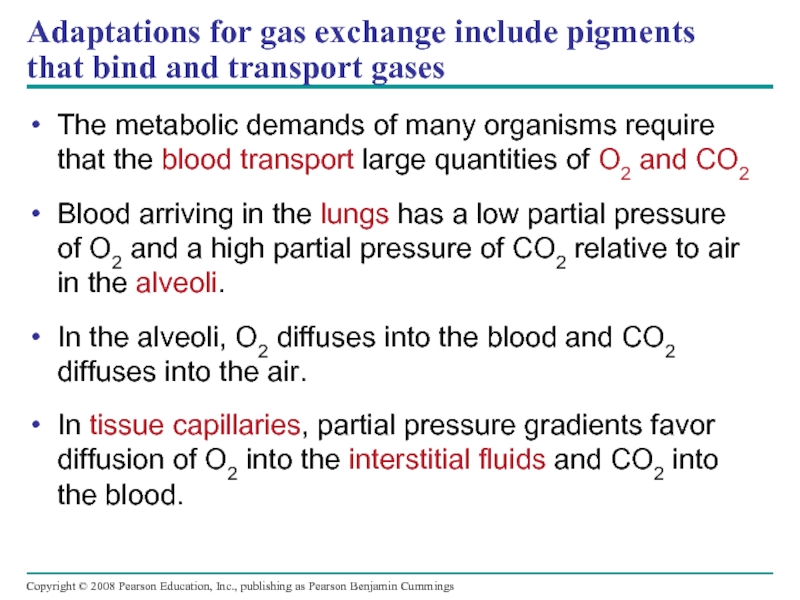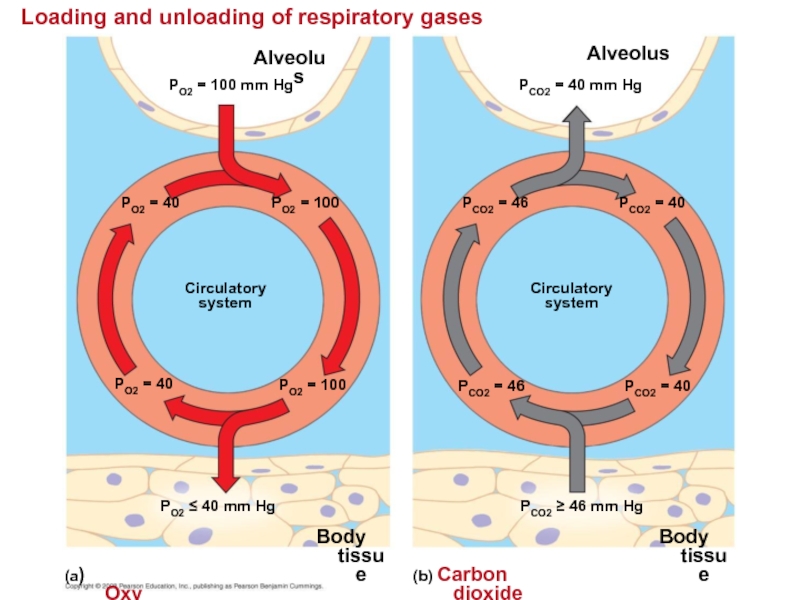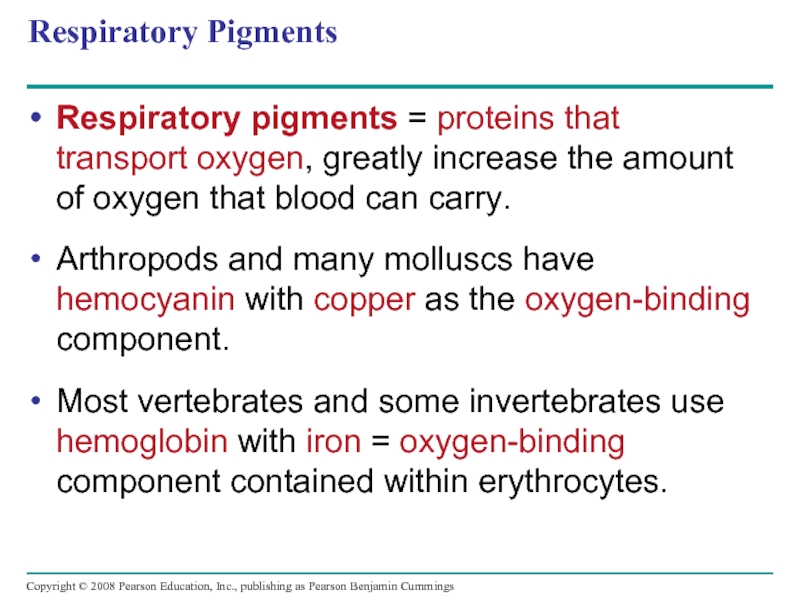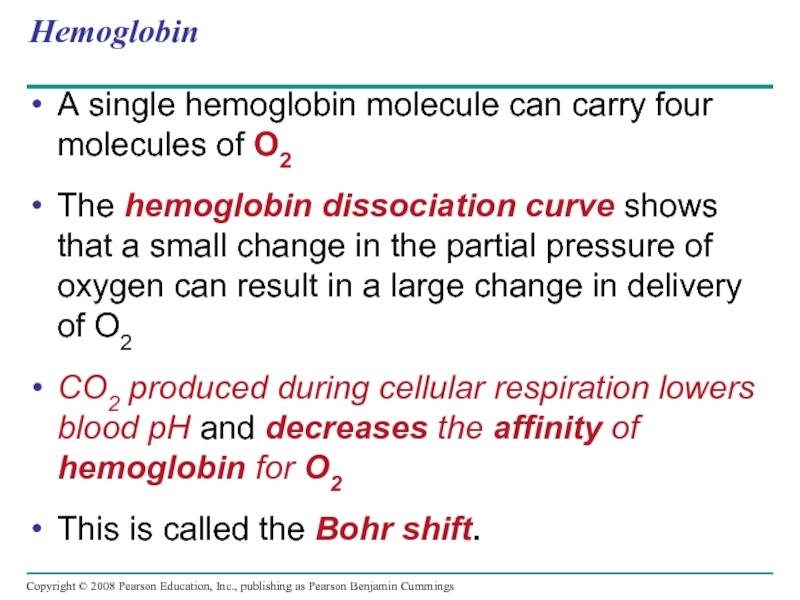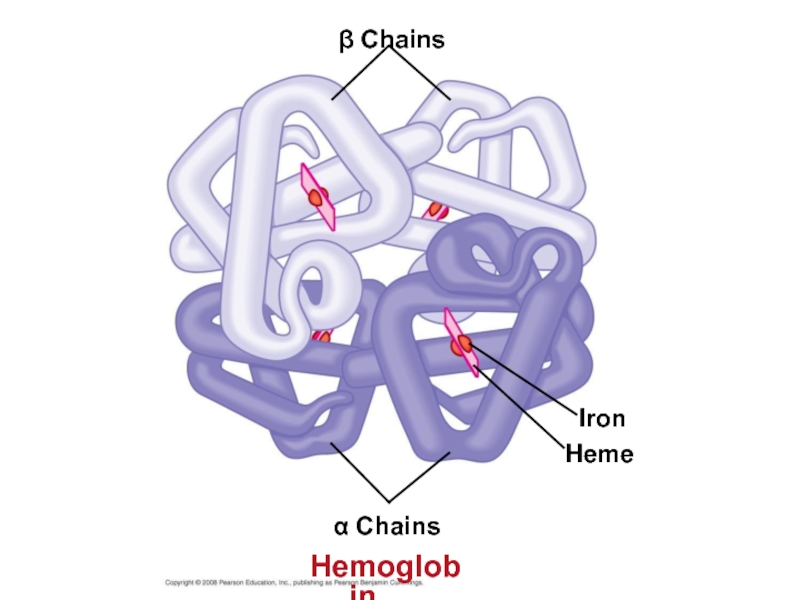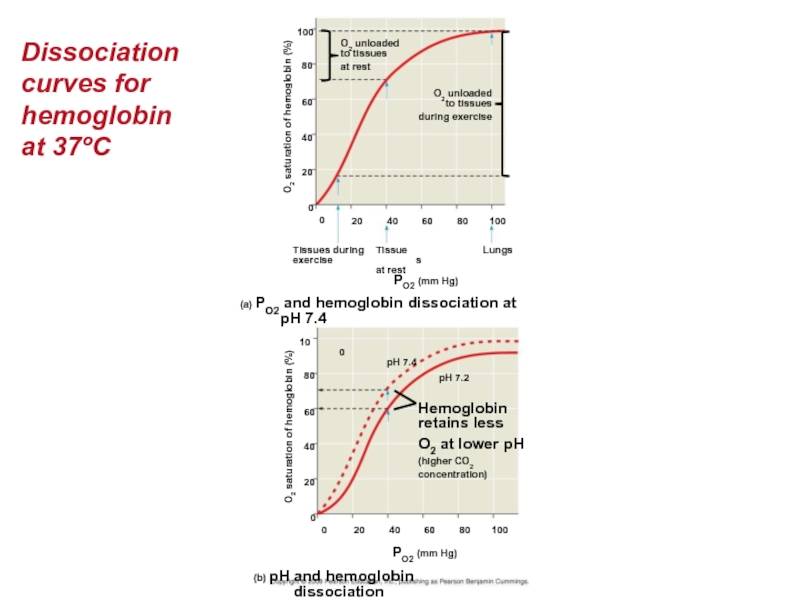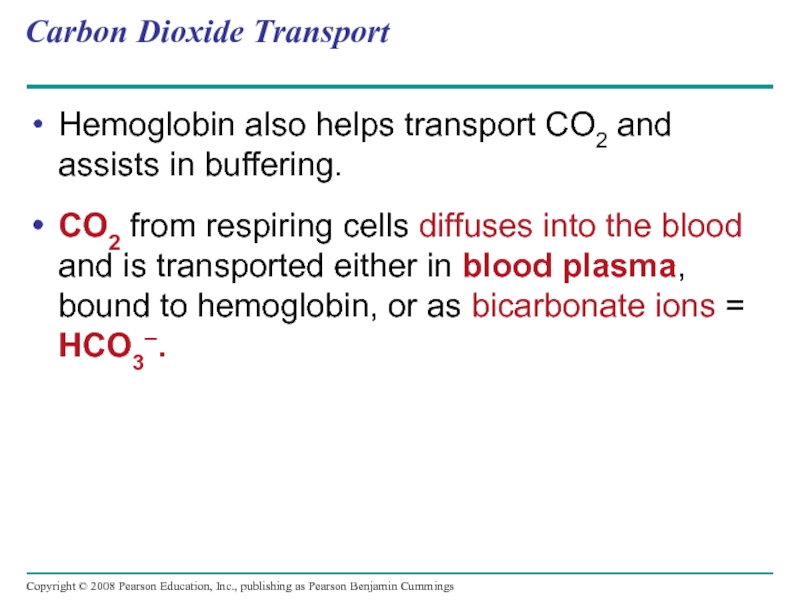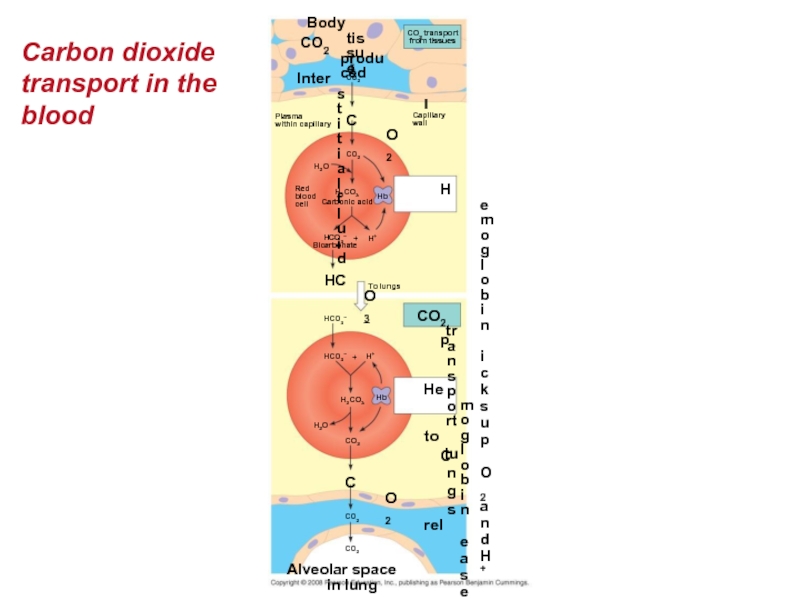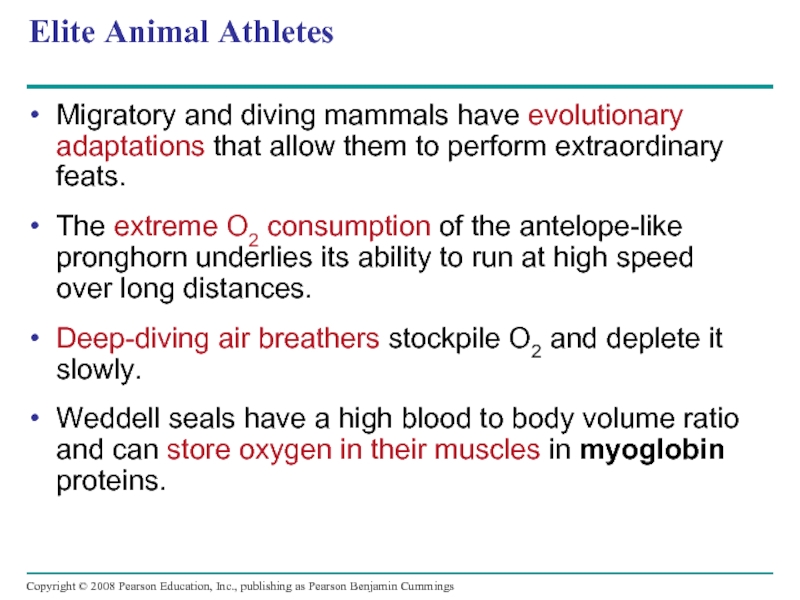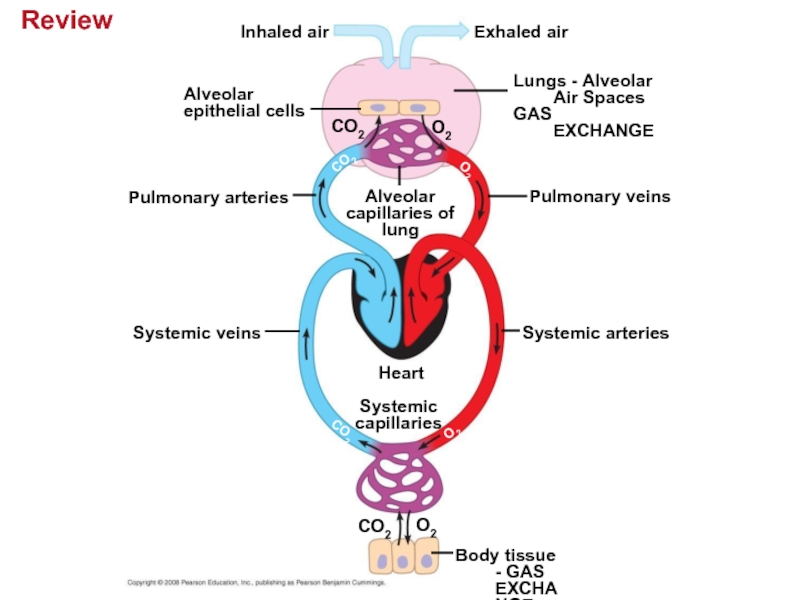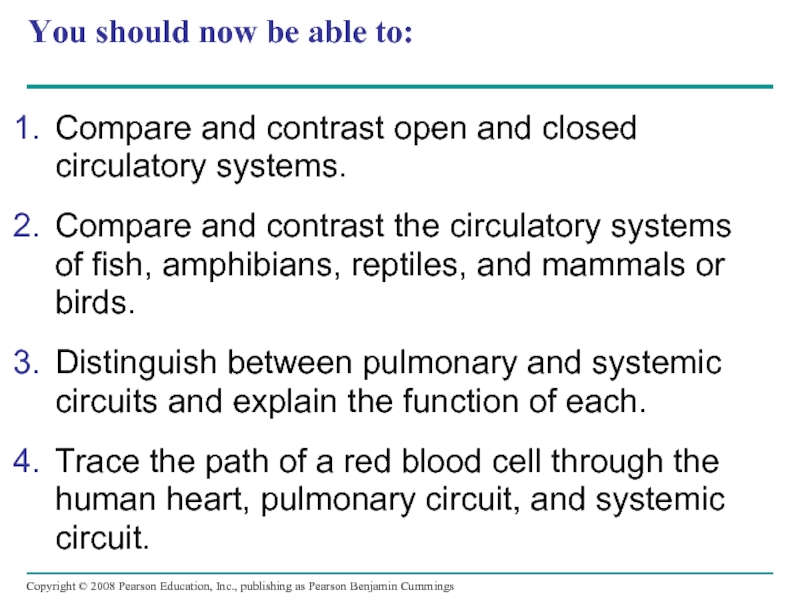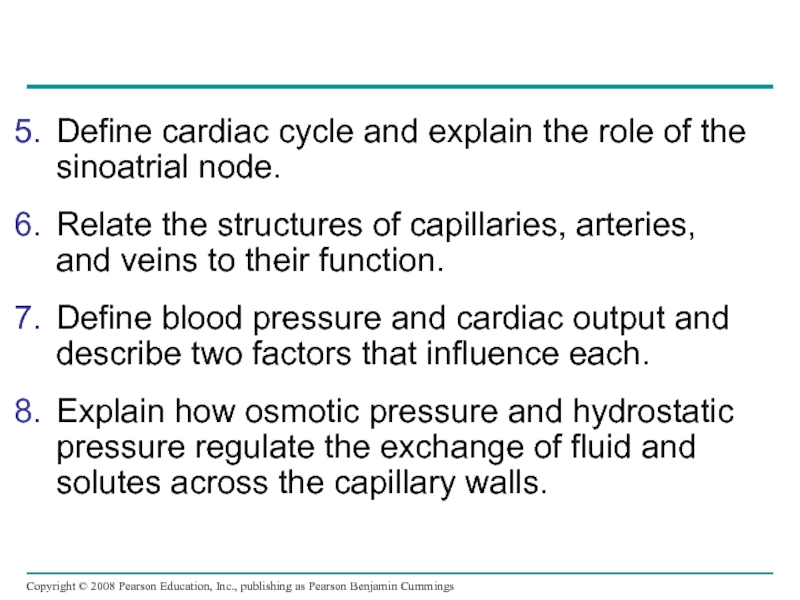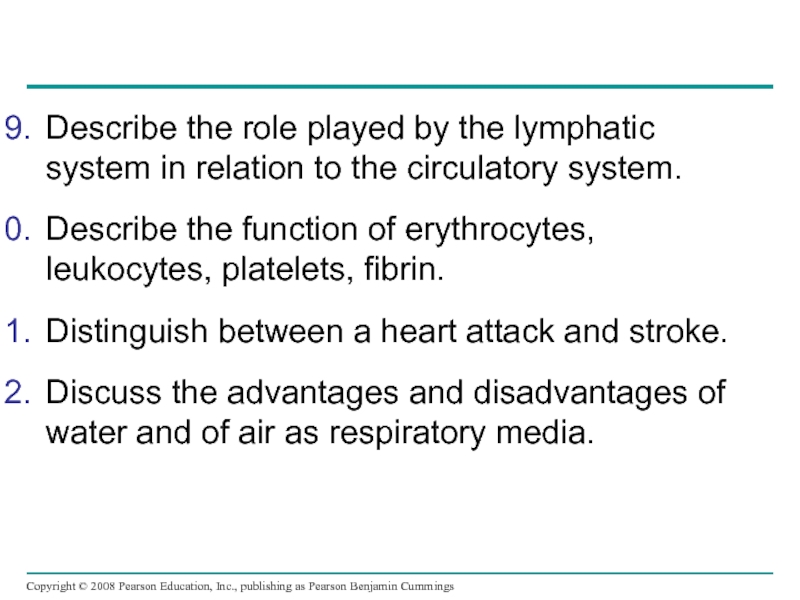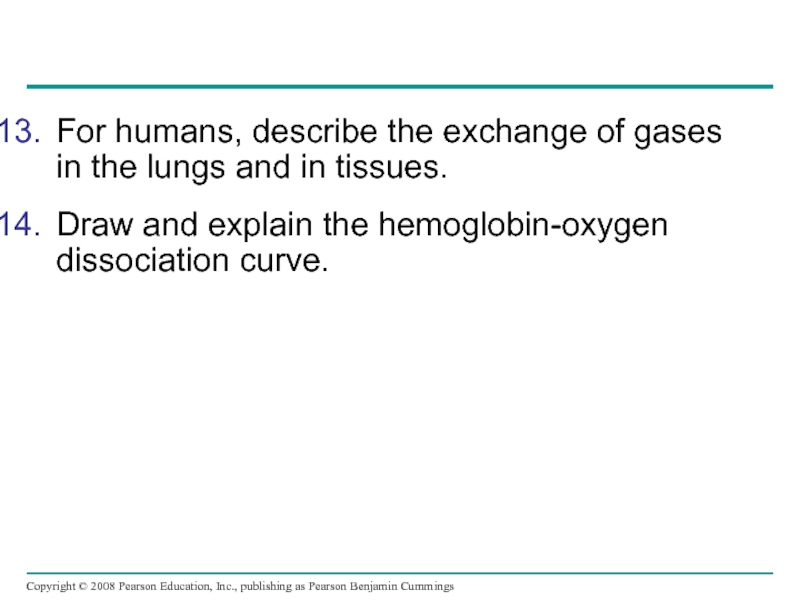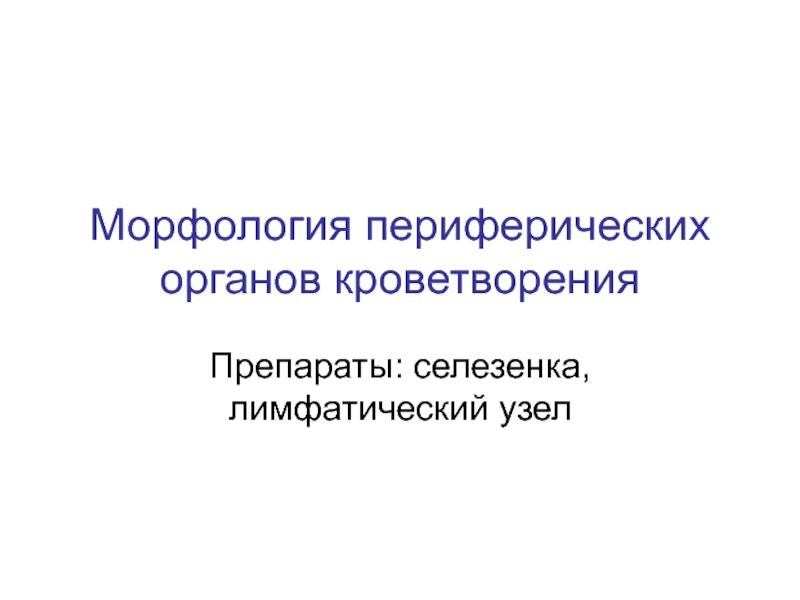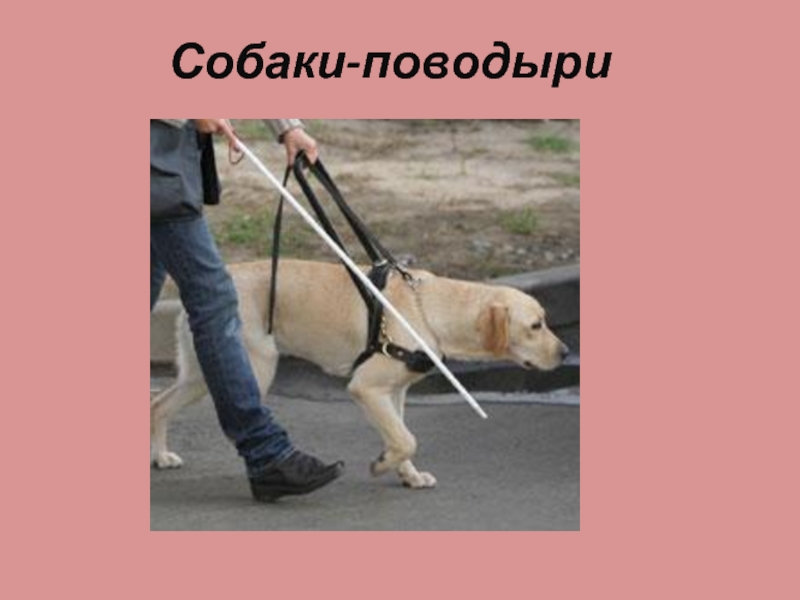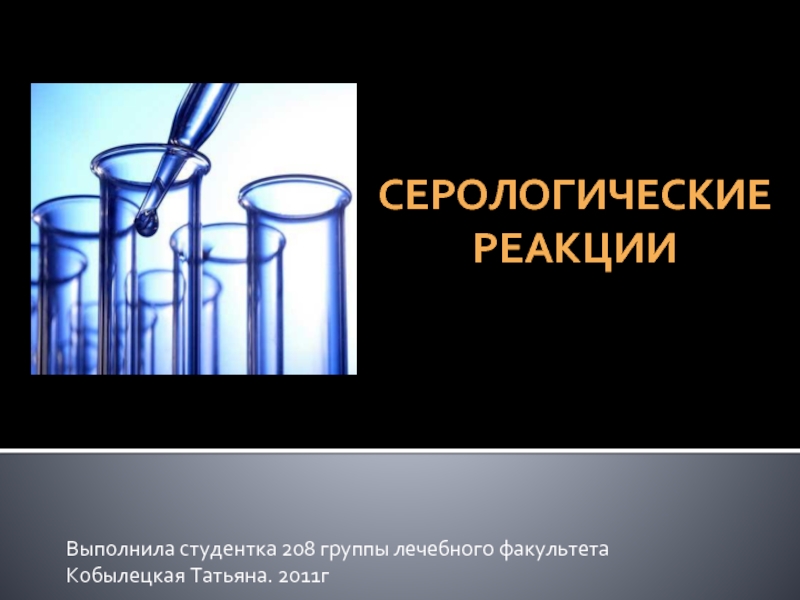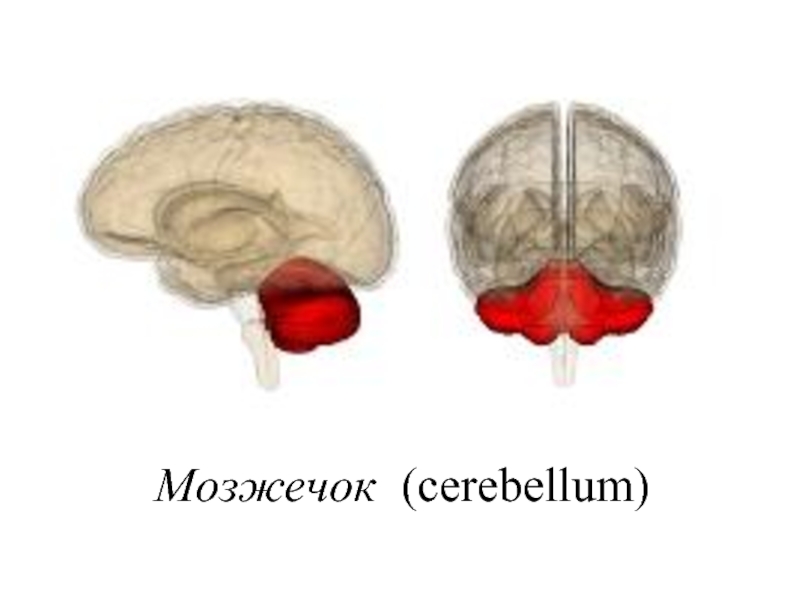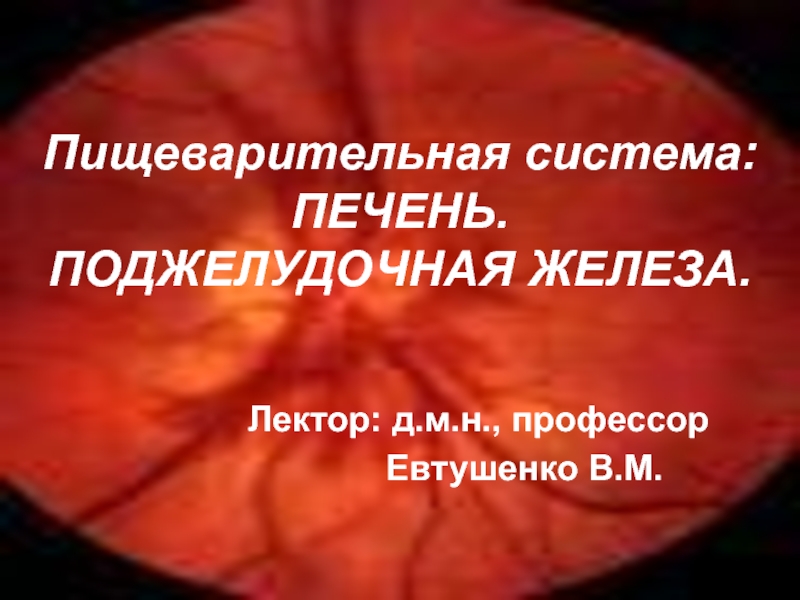- Главная
- Разное
- Дизайн
- Бизнес и предпринимательство
- Аналитика
- Образование
- Развлечения
- Красота и здоровье
- Финансы
- Государство
- Путешествия
- Спорт
- Недвижимость
- Армия
- Графика
- Культурология
- Еда и кулинария
- Лингвистика
- Английский язык
- Астрономия
- Алгебра
- Биология
- География
- Детские презентации
- Информатика
- История
- Литература
- Маркетинг
- Математика
- Медицина
- Менеджмент
- Музыка
- МХК
- Немецкий язык
- ОБЖ
- Обществознание
- Окружающий мир
- Педагогика
- Русский язык
- Технология
- Физика
- Философия
- Химия
- Шаблоны, картинки для презентаций
- Экология
- Экономика
- Юриспруденция
Circulation and Gas Exchange презентация
Содержание
- 1. Circulation and Gas Exchange
- 2. Overview: Trading Places Every organism must exchange
- 3. For most cells making up multicellular organisms,
- 4. How does a feathery fringe help this animal survive?
- 5. Circulatory systems link exchange surfaces with cells
- 6. Gastrovascular Cavities Simple animals, such as cnidarians,
- 7. Internal transport
- 8. Open and Closed Circulatory Systems More complex
- 9. In insects, other arthropods, and most molluscs,
- 10. In a closed circulatory system, the blood
- 12. Organization of Vertebrate Closed Circulatory Systems Humans
- 13. Arteries branch into arterioles and carry blood
- 14. Vertebrate hearts contain two or more chambers.
- 15. Single Circulation Bony fishes, rays, and sharks
- 16. Single circulation in fishes Artery Ventricle
- 17. Double Circulation Amphibian, reptiles, and mammals have
- 18. Double circulation in vertebrates Amphibians Lung
- 19. In reptiles and mammals, oxygen-poor blood flows
- 20. Adaptations of Double Circulatory Systems Amphibians: Frogs
- 21. Reptiles (Except Birds) Turtles, snakes, and lizards
- 22. Mammals Mammals and birds have
- 23. Coordinated cycles of heart contraction drive double
- 24. Blood returns to the heart through the
- 25. mammalian cardiovascular system
- 26. The Mammalian Heart: A Closer Look A
- 27. Mammalian Heart
- 28. The heart contracts and relaxes in a
- 29. Cardiac cycle Semilunar valves closed 0.4 sec
- 30. The heart rate, also called the pulse,
- 31. Four valves prevent backflow of blood in
- 32. Maintaining the Heart’s Rhythmic Beat Some cardiac
- 33. Control of heart rhythm
- 34. Patterns of blood pressure and flow
- 35. Structure of blood vessels
- 36. Capillaries have thin walls, the endothelium plus
- 37. Blood Flow Velocity Physical laws governing movement
- 38. The interrelationship of cross-sectional area of blood
- 39. Blood Pressure Blood pressure is the hydrostatic
- 40. Changes in Blood Pressure During the Cardiac
- 41. Regulation of Blood Pressure Blood pressure is
- 42. Vasoconstriction and vasodilation help maintain adequate blood
- 43. Question: How do endothelial cells control vasoconstriction?
- 44. Measurement of blood pressure:
- 45. Fainting is caused by inadequate blood flow
- 46. Blood flow in veins
- 47. Capillary Function Capillaries in major organs are
- 48. Blood flow in capillary beds Precapillary
- 49. The critical exchange of substances between the
- 50. Fluid exchange between capillaries and the
- 51. Fluid Return by the Lymphatic System The
- 52. Lymph nodes are organs that produce phagocytic
- 53. Blood Composition and Function Blood consists of
- 54. Composition of mammalian blood Plasma 55%
- 55. Plasma Blood plasma is about 90% water.
- 56. Cellular Elements Suspended in blood plasma are
- 57. Red blood cells, or erythrocytes, are by
- 58. Leukocytes - Defense There are five major
- 59. Platelets - Blood Clotting Platelets are fragments
- 60. Collagen fibers Platelet plug Platelet releases chemicals
- 61. Stem Cells and the Replacement of Cellular
- 62. Differentiation of Blood Cells Stem
- 63. Cardiovascular Disease = Disorders of the Heart
- 64. Atherosclerosis Connective tissue Smooth muscle Endothelium
- 65. Treatment and Diagnosis of Cardiovascular Disease Cholesterol
- 66. Gas exchange occurs across specialized respiratory surfaces
- 67. Respiratory Media Animals can use air or
- 68. Respiratory Surfaces Animals require large, moist respiratory
- 69. Gills are outfoldings of the body that
- 70. Ventilation moves the respiratory medium over the
- 71. Structure and function of fish gills Anatomy
- 72. Tracheal Systems in Insects The tracheal system
- 73. Tracheal systems Air sacs Tracheae =
- 74. Lungs = Infoldings of the body
- 75. Mammalian Respiratory Systems: A Closer Look A
- 76. Mammalian Respiratory System Pharynx Larynx
- 77. Breathing Ventilates the Lungs by Inhalation
- 78. Negative pressure breathing: H --> L
- 79. How a Bird Breathes Birds have eight
- 80. The Avian Respiratory System Anterior air sacs
- 81. Control of Breathing in Humans In humans,
- 82. Sensors in the aorta and carotid arteries
- 83. Automatic control of breathing Breathing control centers
- 84. Adaptations for gas exchange include pigments that
- 85. Loading and unloading of respiratory gases
- 86. Respiratory Pigments Respiratory pigments = proteins that
- 87. Hemoglobin A single hemoglobin molecule can carry
- 88. β Chains Iron Heme α Chains Hemoglobin
- 89. Dissociation curves for hemoglobin at 37ºC
- 90. Carbon Dioxide Transport Hemoglobin also helps transport
- 91. Carbon dioxide transport in the blood
- 92. Elite Animal Athletes Migratory and diving mammals
- 93. Review Inhaled air Exhaled air Alveolar epithelial
- 94. You should now be able to: Compare
- 95. Define cardiac cycle and explain the role
- 96. Describe the role played by the lymphatic
- 97. For humans, describe the exchange of gases
Слайд 2Overview: Trading Places
Every organism must exchange materials with its environment.
Exchanges ultimately
In unicellular organisms, these exchanges occur directly with the environment.
Слайд 3For most cells making up multicellular organisms, direct exchange with the
Gills are an example of a specialized exchange system in animals.
Internal transport and gas exchange are functionally related in most animals.
Слайд 5Circulatory systems link exchange surfaces with cells throughout the body
In small
In most animals, transport systems connect the organs of exchange with the body cells.
Most complex animals have internal transport systems that circulate fluid.
Слайд 6Gastrovascular Cavities
Simple animals, such as cnidarians, have a body wall that
This cavity functions in both digestion and distribution of substances throughout the body.
Some cnidarians, such as jellies, have elaborate gastrovascular cavities.
Flatworms have a gastrovascular cavity and a large surface area to volume ratio.
Слайд 7
Internal transport in gastrovascular cavities
Circular
canal
Radial canal
Mouth
(a) The
The planarian Dugesia, a
flatworm
(b)
Mouth
Pharynx
2 mm
5 cm
Слайд 8Open and Closed Circulatory Systems
More complex animals have either open or
Both systems have three basic components:
A circulatory fluid = blood or hemolymph.
A set of tubes = blood vessels.
A muscular pump = the heart.
Слайд 9In insects, other arthropods, and most molluscs, blood bathes the organs
In an open circulatory system, there is no distinction between blood and interstitial fluid, and this general body fluid is more correctly called hemolymph.
Слайд 10In a closed circulatory system, the blood is confined to vessels
Closed systems are more efficient at transporting circulatory fluids to tissues and cells.
Слайд 11 Open and closed circulatory
Heart
Hemolymph in
sinuses
surrounding organs
Heart
Interstitial
fluid
Small branch vessels
In each organ
Blood
Dorsal vessel
(main heart)
Auxiliary hearts
Ventral vessels
(b) A closed circulatory system
(a) An open circulatory system
Tubular heart
Pores
Слайд 12Organization of Vertebrate Closed Circulatory Systems
Humans and other vertebrates have a
The three main types of blood vessels are:
arteries - away from the heart.
veins - toward the heart.
capillaries - exchange with body cells.
Слайд 13Arteries branch into arterioles and carry blood to capillaries.
Networks of
Venules converge into veins and return blood from capillaries to the heart.
Слайд 14Vertebrate hearts contain two or more chambers.
Blood enters through an atrium
Atria - receive blood
Ventricles - pump blood
Слайд 15Single Circulation
Bony fishes, rays, and sharks have single circulation with a
In single circulation, blood leaving the heart passes through two capillary beds before returning.
Слайд 16Single circulation in fishes
Artery
Ventricle
Atrium
Heart
Vein
Systemic capillaries
Systemic
circulation
Gill
circulation
Gill capillaries
Слайд 17Double Circulation
Amphibian, reptiles, and mammals have double circulation.
Oxygen-poor and oxygen-rich blood
Слайд 18Double circulation in vertebrates
Amphibians
Lung and skin capillaries
Pulmocutaneous
circuit
Atrium (A)
Ventricle (V)
Atrium (A)
Systemic
circuit
Right
Left
Systemic capillaries
Lung capillaries
Pulmonary
circuit
Right
systemic
aorta
Right
Left
Left
systemic
aorta
Systemic capillaries
A
A
V
V
Systemic capillaries
Pulmonary
circuit
Systemic
circuit
Right
Left
A
A
V
V
Lung capillaries
Mammals and
Birds
Слайд 19In reptiles and mammals, oxygen-poor blood flows through the pulmonary circuit
In amphibians, oxygen-poor blood flows through a pulmocutaneous circuit to pick up oxygen through the lungs and skin.
Oxygen-rich blood delivers oxygen through the systemic circuit.
Double circulation maintains higher blood pressure in the organs than does single circulation.
Слайд 20Adaptations of Double Circulatory Systems
Amphibians:
Frogs / amphibians have a three-chambered heart:
The ventricle pumps blood into a forked artery that splits the ventricle’s output into the pulmocutaneous circuit and the systemic circuit.
Underwater, blood flow to the lungs is nearly shut off.
Слайд 21Reptiles (Except Birds)
Turtles, snakes, and lizards have a three-chambered heart: two
In alligators, caimans, and other crocodilians a septum - partially or fully divides the ventricle.
Reptiles have double circulation, with a pulmonary circuit - lungs and a systemic circuit.
Слайд 22 Mammals
Mammals and birds have a four-chambered heart with two
The left side of the heart pumps and receives only oxygen-rich blood, while the right side receives and pumps only oxygen-poor blood.
Mammals and birds are endotherms and require more O2 than ectotherms.
RA --> RV --> LUNGS --> LA --> LV --> Body
Слайд 23Coordinated cycles of heart contraction drive double circulation in mammals
Blood begins
In the lungs, the blood loads O2 and unloads CO2
Oxygen-rich blood from the lungs enters the heart at the left atrium and is pumped through the aorta to the body tissues by the left ventricle.
The aorta provides blood to the heart through the coronary arteries.
Слайд 24Blood returns to the heart through the superior vena cava (deoxygenated
The superior vena cava and inferior vena cava flow into the Right Atrium - RA.
Слайд 25
mammalian cardiovascular system
Superior vena cava
Returns deoxygenated blood
body to heart RA
Pulmonary artery
Capillaries
of right Lung
GAS EXCHANGE
3
7
3
8
9
2
4
11
5
1
10
Aorta
Pulmonary vein
Right Atrium
RA - Receives deoxygenated blood
from body
Right Ventricle
RV - Pumps blood to lungs
Inferior vena cava
Returns deoxygenated blood from
body to heart RA
Capillaries of
abdominal organs and hind limbs
EXCHANGE with body cells
Pulmonary vein
Carries oxygenated blood
to heart: LA
Left Atrium - LA
Receives oxygenated blood
from lungs
Left Ventricle - LV
Pumps oxygenated blood to body
Aorta = main artery to body
for Systemic Circulation
Capillaries
of left Lung
GAS EXCHANGE
Pulmonary artery
Carries deoxygenated blood to lungs
Capillaries of head and
Forelimbs - EXCHANGE
Слайд 26The Mammalian Heart: A Closer Look
A closer look at the mammalian
RIGHT side = deoxygenated blood from body pumped to lungs.
LUNGS = gas exchange.
LEFT side = oxygenated blood from lungs pumped to body.
Слайд 27 Mammalian Heart
Pulmonary artery
- to lungs
Right
Receives
Deoxygented
Blood from
body
Semilunar
valve
Atrioventricular
valve
Right Ventricle RV
Pumps to lungs for
gas exchange
Left Ventricle LV
Pumps oxygenated
blood to body via aorta
Atrioventricular
valve
Left Atrium LA
Receives oxgenated
blood from lungs
Semilunar
valve
Pulmonary veins -
from lungs to heart
Aorta - systemic
circulation
Слайд 28The heart contracts and relaxes in a rhythmic cycle called the
The contraction, or pumping, phase is called systole.
The relaxation, or filling, phase is called diastole.
Blood Pressure = systolic / diastolic
Слайд 29Cardiac cycle
Semilunar
valves
closed
0.4 sec
AV
valves
open
Atrial and
ventricular
diastole
1
2
0.1 sec
Atrial systole;
ventricular
diastole
3
0.3 sec
Semilunar
valves
open
AV valves
closed
Ventricular systole;
atrial diastole
Слайд 30The heart rate, also called the pulse, is the number of
The stroke volume is the amount of blood pumped in a single contraction.
The cardiac output is the volume of blood pumped into the systemic circulation per minute and depends on both the heart rate and stroke volume.
Слайд 31Four valves prevent backflow of blood in the heart:
The atrioventricular (AV)
The semilunar valves control blood flow to the aorta and the pulmonary artery.
The “lub-dup” sound of a heart beat is caused by the recoil of blood against the AV valves (lub) then against the semilunar (dup) valves.
Backflow of blood through a defective valve causes a heart murmur.
Слайд 32Maintaining the Heart’s Rhythmic Beat
Some cardiac muscle cells are self-excitable =
The sinoatrial (SA) node, or pacemaker, sets the rate and timing at which cardiac muscle cells contract.
Impulses from the SA node travel to the atrioventricular (AV) node. At the AV node, the impulses are delayed and then travel to the Purkinje fibers that make the ventricles contract.
Impulses that travel during the cardiac cycle can be recorded as an electrocardiogram (ECG or EKG). The pacemaker is influenced by nerves, hormones, body temperature, and exercise.
Слайд 33 Control of heart rhythm
Signals spread
throughout
ventricles.
4
Purkinje Fibers:
ventricles contract
Pacemaker
generates
signals to contract.
1
SA node
(pacemaker)
ECG
Signals are
delayed at
AV node.
2
AV
node
Signals pass
to heart apex.
3
Bundle
branches
Heart
apex
Слайд 34
Patterns of blood pressure and flow reflect the structure and arrangement
The physical principles that govern movement of water in plumbing systems also influence the functioning of animal circulatory systems.
The epithelial layer that lines blood vessels is called the endothelium.
Слайд 35Structure
of
blood vessels
Artery
Vein
SEM
100 µm
Endothelium
Artery
Smooth
muscle
Connective
tissue
Capillary
Basal lamina
Endothelium
Smooth
muscle
Connective
tissue
Valve
Vein
Arteriole
Venule
Red blood cell
Capillary
15 µm
LM
Слайд 36Capillaries have thin walls, the endothelium plus its basement membrane, to
Arteries and veins have an endothelium, smooth muscle, and connective tissue.
Arteries have thicker walls than veins to accommodate the high pressure of blood pumped from the heart.
In the thinner-walled veins, blood flows back to the heart mainly as a result of muscle action.
Слайд 37Blood Flow Velocity
Physical laws governing movement of fluids through pipes affect
Velocity of blood flow is slowest in the capillary beds, as a result of the high resistance and large total cross-sectional area.
Blood flow in capillaries is necessarily slow for exchange of materials.
Слайд 38The interrelationship of cross-sectional area of blood vessels, blood flow velocity,
5,000
4,000
3,000
2,000
1,000
0
0
50
40
30
20
10
120
80
100
60
40
20
0
Area (cm2)
Velocity
(cm/sec)
Pressure
(mm Hg)
Aorta
Arteries
Arterioles
Capillaries
Venules
Veins
Venae cavae
Diastolic
pressure
Systolic
pressure
Слайд 39Blood Pressure
Blood pressure is the hydrostatic pressure that blood exerts against
In rigid vessels blood pressure is maintained; less rigid vessels deform and blood pressure is lost.
Слайд 40Changes in Blood Pressure During the Cardiac Cycle
Systolic pressure is the
Diastolic pressure is the pressure in the arteries during relaxation /diastole; it is lower than systolic pressure.
A pulse is the rhythmic bulging of artery walls with each heartbeat.
Слайд 41Regulation of Blood Pressure
Blood pressure is determined by cardiac output and
Vasoconstriction is the contraction of smooth muscle in arteriole walls; it increases blood pressure.
Vasodilation is the relaxation of smooth muscles in the arterioles; it causes blood pressure to fall.
Слайд 42Vasoconstriction and vasodilation help maintain adequate blood flow as the body’s
The peptide endothelin is an important inducer of vasoconstriction.
Blood pressure is generally measured for an artery in the arm at the same height as the heart.
Blood pressure for a healthy 20 year old at rest is 120 mm Hg at systole / 70 mm Hg at diastole.
Слайд 43Question: How do endothelial cells control vasoconstriction?
Ser
RESULTS
Ser
Ser
Cys
Cys
—NH3+
Leu
Met
Asp
Lys
Glu
Cys
Val
Tyr
Phe
Cys
His
Leu
Asp
Ile
Ile
Trp
—COO–
Endothelin
Parent polypeptide
Trp
Cys
Endothelin
53
73
1
203
Слайд 44 Measurement of blood pressure:
Pressure in cuff
greater than
120 mm Hg
Rubber
cuff
inflated
with air
Artery
closed
120
120
Pressure in cuff
drops below
120 mm Hg
Sounds
audible in
stethoscope
Pressure in
cuff below
70 mm Hg
70
Blood pressure reading: 120/70
Sounds
stop
Слайд 45Fainting is caused by inadequate blood flow to the head.
Animals with
Blood is moved through veins by smooth muscle contraction, skeletal muscle contraction, and expansion of the vena cava with inhalation.
One-way valves in veins / heart prevent backflow of blood.
Слайд 46Blood flow in veins
Blood flow in veins
Direction of blood flow
in vein
Valve (open)
Skeletal muscle
Valve (closed)
Слайд 47Capillary Function
Capillaries in major organs are usually filled to capacity. Blood
Two mechanisms regulate distribution of blood in capillary beds:
Contraction of the smooth muscle layer in the wall of an arteriole constricts the vessel.
Precapillary sphincters control flow of blood between arterioles and venules.
Слайд 48Blood flow in capillary beds
Precapillary sphincters
Thoroughfare
channel
Arteriole
Capillaries
Venule
(a) Sphincters relaxed
(b) Sphincters contracted
Arteriole
Venule
Слайд 49The critical exchange of substances between the blood and interstitial fluid
The difference between blood pressure and osmotic pressure drives fluids out of capillaries at the arteriole end and into capillaries at the venule end.
Слайд 50
Fluid exchange between capillaries and the interstitial fluid
Body tissue
Capillary
INTERSTITIAL FLUID
Net fluid
movement
Direction of
blood flow
Net fluid
movement in
Blood pressure = hydrostatic pressure
Inward flow
Outward flow
Osmotic pressure
Arterial end of capillary
Venous end
Pressure
Слайд 51Fluid Return by the Lymphatic System
The lymphatic system - returns fluid
This system aids in body defense.
Fluid, called lymph, reenters the circulation directly at the venous end of the capillary bed and indirectly through the lymphatic system.
The lymphatic system drains into neck veins.
Слайд 52Lymph nodes are organs that produce phagocytic white blood cells and
Edema is swelling caused by disruptions in the flow of lymph.
Слайд 53Blood Composition and Function
Blood consists of several kinds of blood cells
The cellular elements: red blood cells, white blood cells, and platelets occupy about 45% of the volume of blood.
Слайд 54 Composition of mammalian blood
Plasma 55%
Constituent
Major functions
Water
Solvent for
carrying other
substances
Ions (blood electrolytes)
Osmotic
pH buffering, and
regulation of
membrane
permeability
Sodium
Potassium
Calcium
Magnesium
Chloride
Bicarbonate
Osmotic balance
pH buffering
Clotting
Defense
Plasma proteins
Albumin
Fibrinogen
Immunoglobulins
(antibodies)
Substances transported by blood
Nutrients (such as glucose, fatty acids, vitamins)
Waste products of metabolism
Respiratory gases (O2 and CO2)
Hormones
Separated
blood
elements
Cellular elements 45%
Cell type
Functions
Number
per µL (mm3) of blood
Erythrocytes
(red blood cells)
5–6 million
Transport oxygen
and help transport
carbon dioxide
Leukocytes
(white blood cells)
5,000–10,000
Defense and
immunity
Basophil
Neutrophil
Eosinophil
Lymphocyte
Monocyte
Platelets
Blood clotting
250,000–
400,000
Слайд 55Plasma
Blood plasma is about 90% water.
Among its solutes are inorganic salts
Another important class of solutes is the plasma proteins, which influence blood pH, osmotic pressure, and viscosity. Various plasma proteins function in lipid transport, immunity, and blood clotting.
Plasma transports nutrients, gases, and cell waste.
Слайд 56Cellular Elements
Suspended in blood plasma are two types of cells:
Red blood
White blood cells wbc = leukocytes, function in defense.
Platelets are fragments of cells that are involved in blood clotting.
Слайд 57Red blood cells, or erythrocytes, are by far the most numerous
They transport oxygen throughout the body.
They contain hemoglobin, the iron-containing protein that transports oxygen.
Erythrocytes - Oxygen Transport
Слайд 58Leukocytes - Defense
There are five major types of white blood cells,
They function in defense by phagocytizing bacteria and debris or by producing antibodies.
They are found both in and outside of the circulatory system.
Слайд 59Platelets - Blood Clotting
Platelets are fragments of cells and function in
When the endothelium of a blood vessel is damaged, the clotting mechanism begins.
A cascade of complex reactions converts fibrinogen to fibrin, forming a clot.
A blood clot formed within a blood vessel is called a thrombus and can block blood flow.
Слайд 60Collagen fibers
Platelet plug
Platelet releases chemicals
that make nearby platelets sticky
Clotting factors from:
Platelets
Damaged
Plasma (factors include calcium, vitamin K)
Prothrombin
Thrombin
Fibrinogen
Fibrin
5 µm
Fibrin clot
Red blood cell
Blood clotting
Слайд 61Stem Cells and the Replacement of Cellular Elements
The cellular elements of
Erythrocytes, leukocytes, and platelets all develop from a common source of stem cells in the red marrow of bones.
The hormone erythropoietin (EPO) stimulates erythrocyte production when oxygen delivery is low.
Слайд 62Differentiation of Blood Cells
Stem cells
in bone marrow
Myeloid
stem cells
Lymphoid
stem cells
Lymphocytes
B cells
T cells
Platelets
Neutrophils
Basophils
Eosinophils
Monocytes
Слайд 63Cardiovascular Disease = Disorders of the Heart and the Blood Vessels
One
A heart attack is the death of cardiac muscle tissue resulting from blockage of one or more coronary arteries.
A stroke is the death of nervous tissue in the brain, usually resulting from rupture or blockage of arteries in the brain /head.
Слайд 64Atherosclerosis
Connective
tissue
Smooth
muscle
Endothelium
Plaque
(a) Normal artery
(b) Partly clogged artery
50 µm
250 µm
Слайд 65Treatment and Diagnosis of Cardiovascular Disease
Cholesterol is a major contributor to
Low-density lipoproteins (LDLs) = “bad cholesterol,” are associated with plaque formation.
High-density lipoproteins (HDLs) = “good cholesterol,” reduce the deposition of cholesterol.
Hypertension = high blood pressure, promotes atherosclerosis and increases the risk of heart attack and stroke.
Hypertension can be reduced by dietary changes, exercise, and/or medication.
Слайд 66Gas exchange occurs across specialized respiratory surfaces
Gas exchange supplies oxygen for
Partial pressure is the pressure exerted by a particular gas in a mixture of gases. A gas diffuses from a region of higher partial pressure to a region of lower partial pressure: H --> L
In the lungs and tissues, O2 and CO2 diffuse from where their partial pressures are higher to where they are lower.
Слайд 67Respiratory Media
Animals can use air or water as a source of
In a given volume, there is less O2 available in water than in air.
Obtaining O2 from water requires greater efficiency than air breathing.
Слайд 68Respiratory Surfaces
Animals require large, moist respiratory surfaces for exchange of gases
Gas exchange across respiratory surfaces takes place by diffusion.
Respiratory surfaces vary by animal and can include the outer surface, skin, gills, tracheae, and lungs.
Слайд 69Gills are outfoldings of the body that create a large surface
Parapodium (functions as gill)
(a) Marine worm
Gills
(b) Crayfish
(c) Sea star
Tube foot
Coelom
Gills
Слайд 70Ventilation moves the respiratory medium over the respiratory surface.
Aquatic animals move
Fish gills use a countercurrent exchange system, where blood flows in the opposite direction to water passing over the gills; blood is always less saturated with O2 than the water it meets… maximizes diffusion.
Слайд 71Structure and function of fish gills
Anatomy of gills
Gill
arch
Water
flow
Operculum
Gill
arch
Gill filament
organization
Blood
vessels
Oxygen-poor blood
Oxygen-rich blood
Fluid
through
gill filament
Lamella
Blood flow through
capillaries in lamella
Water flow
between
lamellae
Countercurrent exchange
PO2 (mm Hg) in water
PO2 (mm Hg) in blood
Net diffusion
of O2from
water to
blood
150
120
90
60
30
110
80
20
Gill filaments
50
140
Слайд 72Tracheal Systems in Insects
The tracheal system of insects consists of tiny
The tracheal tubes supply O2 directly to body cells.
The respiratory and circulatory systems are separate.
Larger insects must ventilate their tracheal system to meet O2 demands.
Слайд 73Tracheal systems
Air sacs
Tracheae = air tubes
External opening:
spiracles
Body
cell
Air
sac
Tracheole
Tracheoles
Mitochondria
Muscle fiber
2.5 µm
Trachea
Air external openings
spiracles
Слайд 74 Lungs = Infoldings of the body surface
The circulatory system
The size and complexity of lungs correlate with an animal’s metabolic rate.
Слайд 75Mammalian Respiratory Systems: A Closer Look
A system of branching ducts /
Air inhaled through the nostrils --> pharynx --> larynx --> trachea --> bronchi --> bronchioles --> alveoli = site of gas exchange.
Exhaled air passes over the vocal cords to create sounds.
Alveoli are wrapped by capillaries for GAS EXCHANGE.
Слайд 76Mammalian Respiratory System
Pharynx
Larynx
(Esophagus)
Trachea
Right lung
Bronchus
Bronchiole
Diaphragm
Heart
SEM
Left
lung
Nasal
cavity
Terminal
bronchiole
Branch of
pulmonary
vein
(oxygen-rich
blood)
Branch of
pulmonary
artery
(oxygen-poor
blood)
Alveoli
Colorized
SEM
50 µm
50 µm
Слайд 77 Breathing Ventilates the Lungs by Inhalation and Exhalation of
Amphibians, such as a frog, ventilates its lungs by positive pressure breathing, which forces air down the trachea.
Mammals ventilate by negative pressure breathing, which pulls air into the lungs by varying volume / air pressure. Lung volume increases as the rib muscles and diaphragm contract.
The tidal volume is the volume of air inhaled with each breath. The maximum tidal volume is the vital capacity. After exhalation, residual volume of air remains in the lungs.
Слайд 78Negative pressure breathing: H --> L
Lung
Diaphragm
Air
inhaled
Rib cage
expands as
rib muscles
contract
Rib cage
smaller as
rib muscles
relax
Air
exhaled
EXHALATION
Diaphragm relaxes
(moves up)
Volume decreases
Pressure increases
Air rushes out
INHALATION
Diaphragm contracts
(moves down)
Volume increases
Pressure decreases
Air rushes in
Слайд 79How a Bird Breathes
Birds have eight or nine air sacs that
Air passes through the lungs in one direction only.
Every exhalation completely renews the air in the lungs.
Слайд 80The Avian Respiratory System
Anterior
air sacs
Posterior
air sacs
Lungs
Air
Lungs
Air
1 mm
Trachea
Air tubes
(parabronchi)
in lung
EXHALATION
Air sacs empty;
Lungs Fill
INHALATION
Air sacs fill
Слайд 81Control of Breathing in Humans
In humans, the main breathing control centers
The medulla regulates the rate and depth of breathing in response to pH changes - CO2 levels in the cerebrospinal fluid.
The medulla adjusts breathing rate and depth to match metabolic demands.
The pons regulates the tempo.
Слайд 82Sensors in the aorta and carotid arteries monitor O2 and CO2
These sensors exert secondary control over breathing.
Слайд 83Automatic control of breathing
Breathing
control
centers
Cerebrospinal
fluid
Pons
Medulla
oblongata
Carotid arteries
Aorta
Diaphragm
Rib muscles
Слайд 84Adaptations for gas exchange include pigments that bind and transport gases
The
Blood arriving in the lungs has a low partial pressure of O2 and a high partial pressure of CO2 relative to air in the alveoli.
In the alveoli, O2 diffuses into the blood and CO2 diffuses into the air.
In tissue capillaries, partial pressure gradients favor diffusion of O2 into the interstitial fluids and CO2 into the blood.
Слайд 85Loading and unloading of respiratory gases
Alveolus
PO2 = 100 mm Hg
PO2 =
PO2 = 100
PO2 = 100
PO2 = 40
Circulatory
system
Body tissue
PO2 ≤ 40 mm Hg
PCO2 ≥ 46 mm Hg
Body tissue
PCO2 = 46
PCO2 = 40
PCO2 = 40
PCO2 = 46
Circulatory
system
PCO2 = 40 mm Hg
Alveolus
(b) Carbon dioxide
(a) Oxygen
Слайд 86Respiratory Pigments
Respiratory pigments = proteins that transport oxygen, greatly increase the
Arthropods and many molluscs have hemocyanin with copper as the oxygen-binding component.
Most vertebrates and some invertebrates use hemoglobin with iron = oxygen-binding component contained within erythrocytes.
Слайд 87Hemoglobin
A single hemoglobin molecule can carry four molecules of O2
The hemoglobin
CO2 produced during cellular respiration lowers blood pH and decreases the affinity of hemoglobin for O2
This is called the Bohr shift.
Слайд 89
Dissociation curves for hemoglobin at 37ºC
O2 unloaded
to tissues
at rest
O2 unloaded
to tissues
during
100
40
0
20
60
80
0
40
80
100
O2 saturation of hemoglobin (%)
20
60
Tissues during
exercise
Tissues
at rest
Lungs
PO2 (mm Hg)
(a) PO2 and hemoglobin dissociation at pH 7.4
O2 saturation of hemoglobin (%)
40
0
20
60
80
0
40
80
100
20
60
100
PO2 (mm Hg)
(b) pH and hemoglobin dissociation
pH 7.4
pH 7.2
Hemoglobin
retains less
O2 at lower pH
(higher CO2
concentration)
Слайд 90Carbon Dioxide Transport
Hemoglobin also helps transport CO2 and assists in buffering.
CO2
Слайд 91
Carbon dioxide transport in the blood
Body tissue
CO2 produced
CO2 transport
from tissues
Capillary
wall
Interstitial fluid
Plasma
within
CO2
CO2
CO2
Red
blood
cell
H2O
H2CO3
Hb
Carbonic acid
Hemoglobin
picks up
CO2 and H+
CO2 transport
to lungs
HCO3–
Bicarbonate
H+
+
Hemoglobin
releases
CO2 and H+
To lungs
HCO3–
HCO3–
Hb
H+
+
HCO3–
H2CO3
H2O
CO2
CO2
CO2
CO2
Alveolar space in lung
Слайд 92Elite Animal Athletes
Migratory and diving mammals have evolutionary adaptations that allow
The extreme O2 consumption of the antelope-like pronghorn underlies its ability to run at high speed over long distances.
Deep-diving air breathers stockpile O2 and deplete it slowly.
Weddell seals have a high blood to body volume ratio and can store oxygen in their muscles in myoglobin proteins.
Слайд 93Review
Inhaled air
Exhaled air
Alveolar
epithelial cells
Lungs - Alveolar Air Spaces
GAS EXCHANGE
CO2
O2
CO2
O2
Alveolar
capillaries of
lung
Pulmonary veins
Pulmonary
Systemic veins
Systemic arteries
Heart
Systemic
capillaries
CO2
O2
CO2
O2
Body tissue - GAS EXCHANGE
Слайд 94You should now be able to:
Compare and contrast open and closed
Compare and contrast the circulatory systems of fish, amphibians, reptiles, and mammals or birds.
Distinguish between pulmonary and systemic circuits and explain the function of each.
Trace the path of a red blood cell through the human heart, pulmonary circuit, and systemic circuit.
Слайд 95Define cardiac cycle and explain the role of the sinoatrial node.
Relate
Define blood pressure and cardiac output and describe two factors that influence each.
Explain how osmotic pressure and hydrostatic pressure regulate the exchange of fluid and solutes across the capillary walls.
Слайд 96Describe the role played by the lymphatic system in relation to
Describe the function of erythrocytes, leukocytes, platelets, fibrin.
Distinguish between a heart attack and stroke.
Discuss the advantages and disadvantages of water and of air as respiratory media.
Слайд 97For humans, describe the exchange of gases in the lungs and
Draw and explain the hemoglobin-oxygen dissociation curve.
